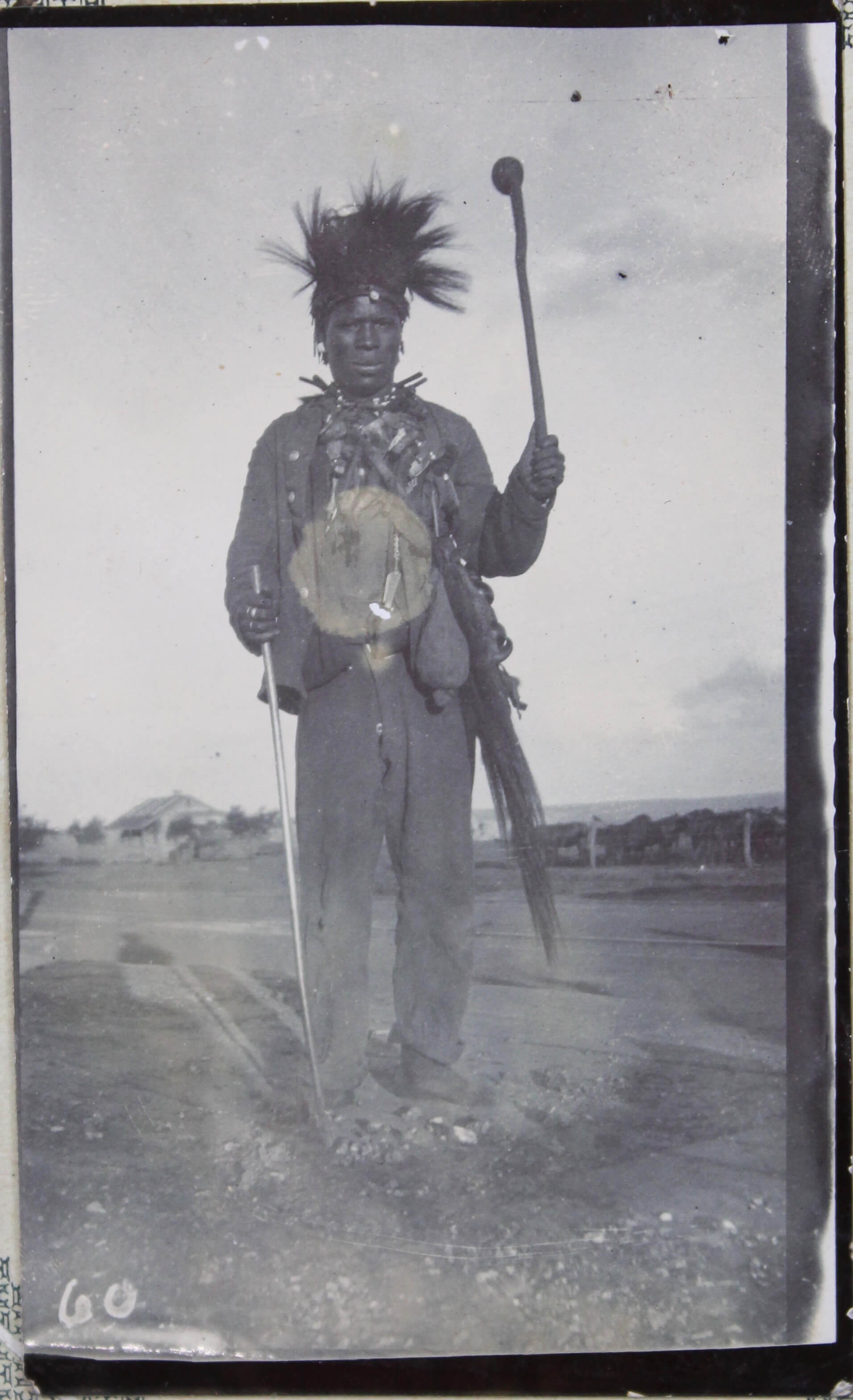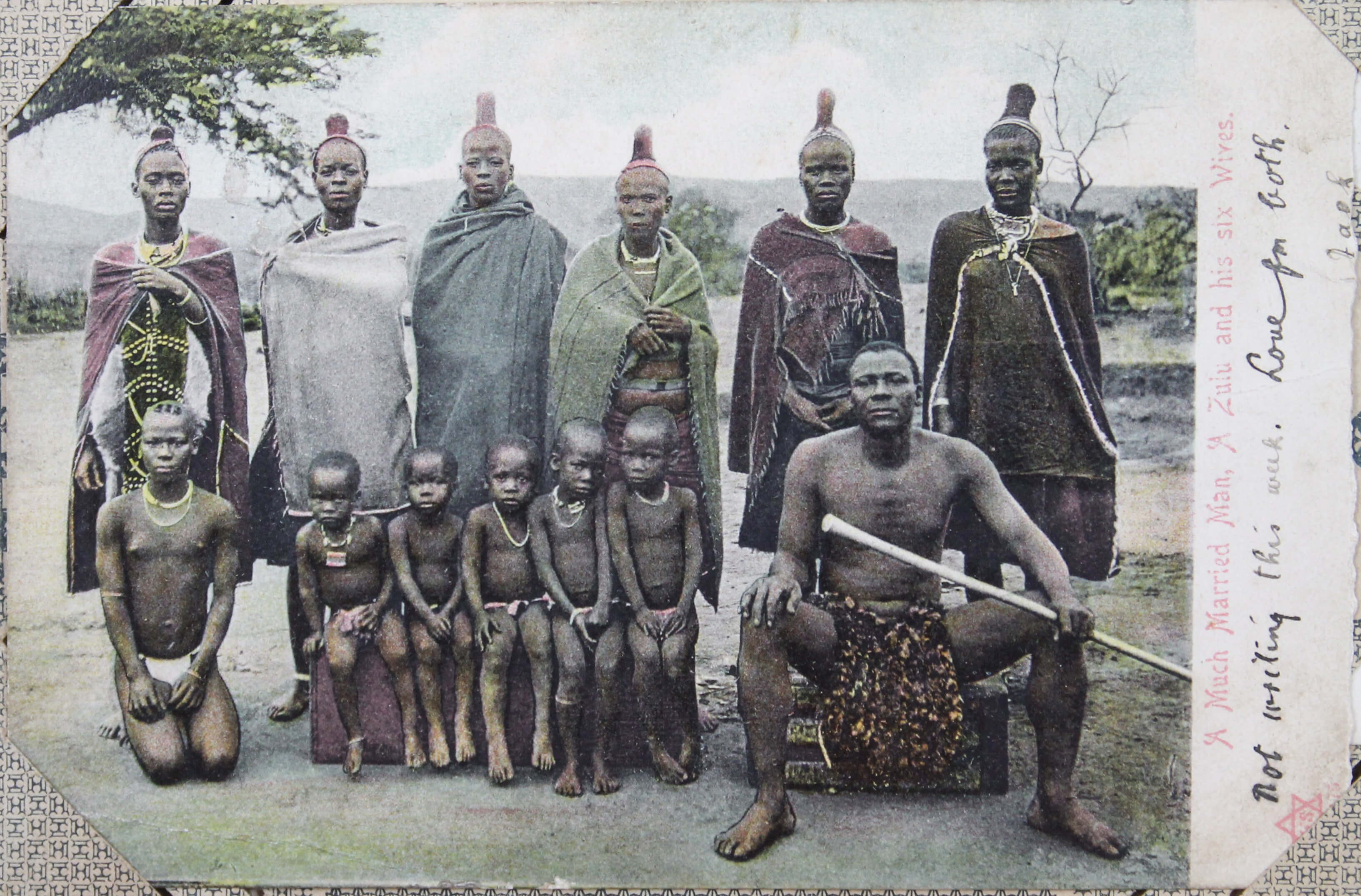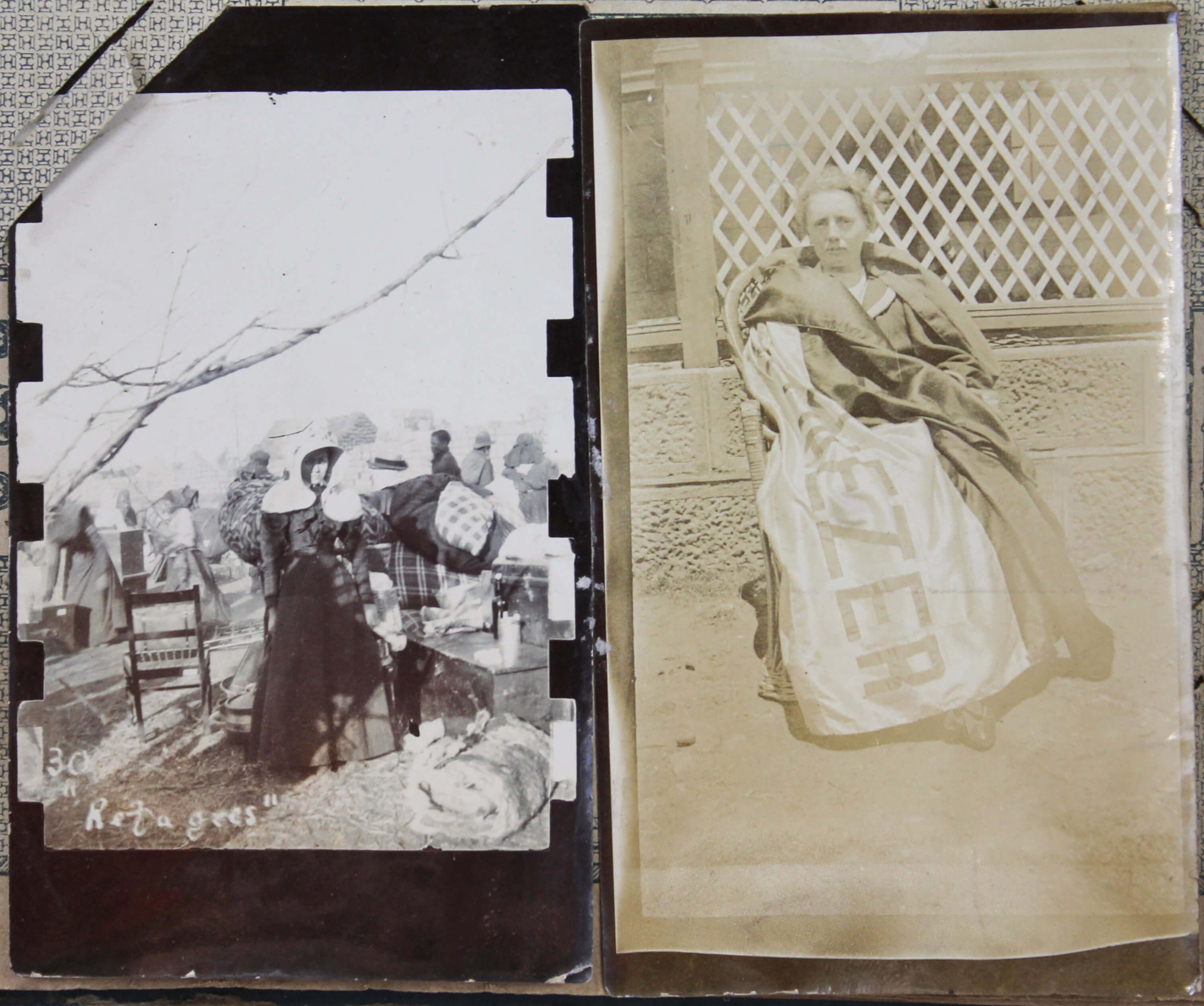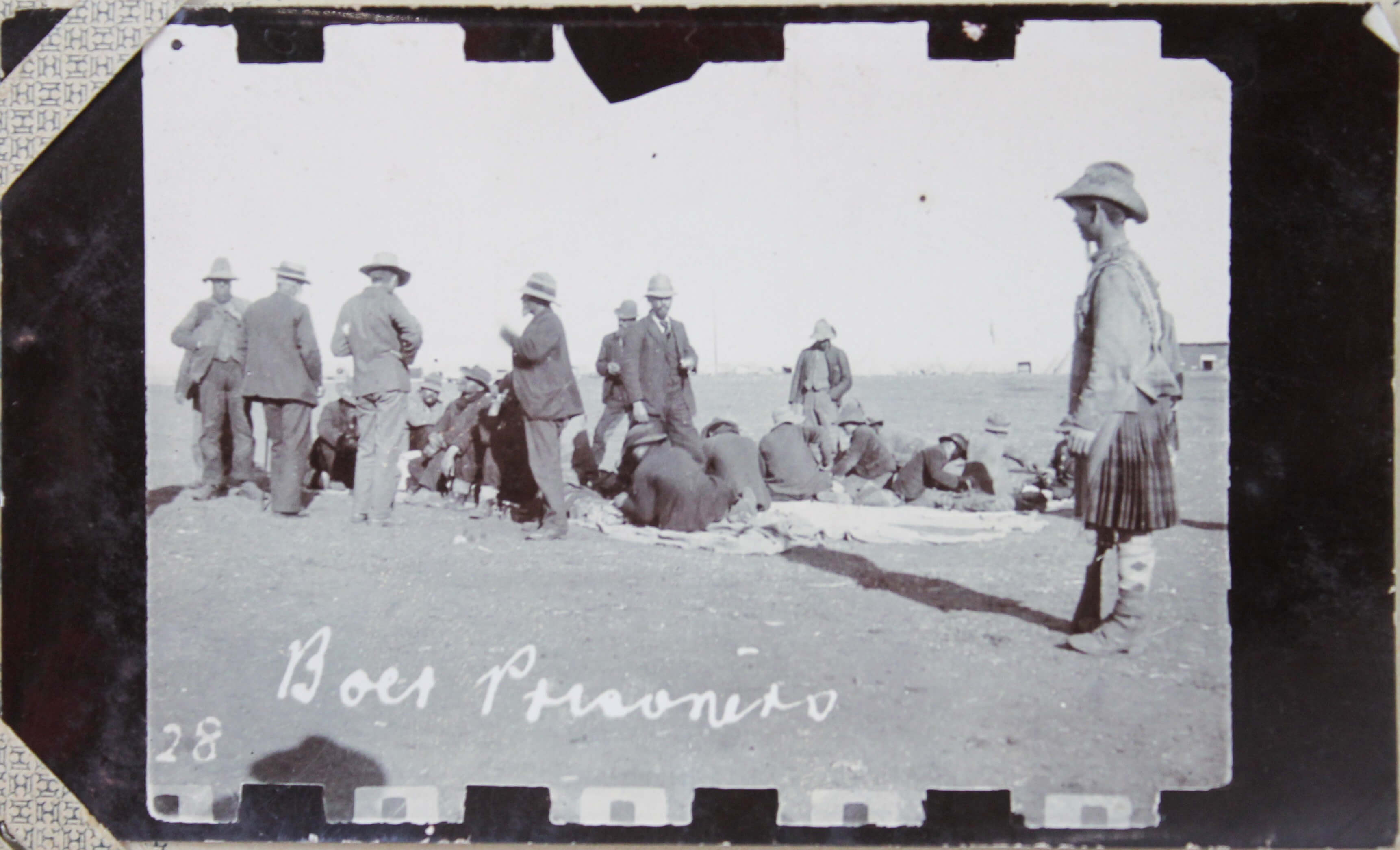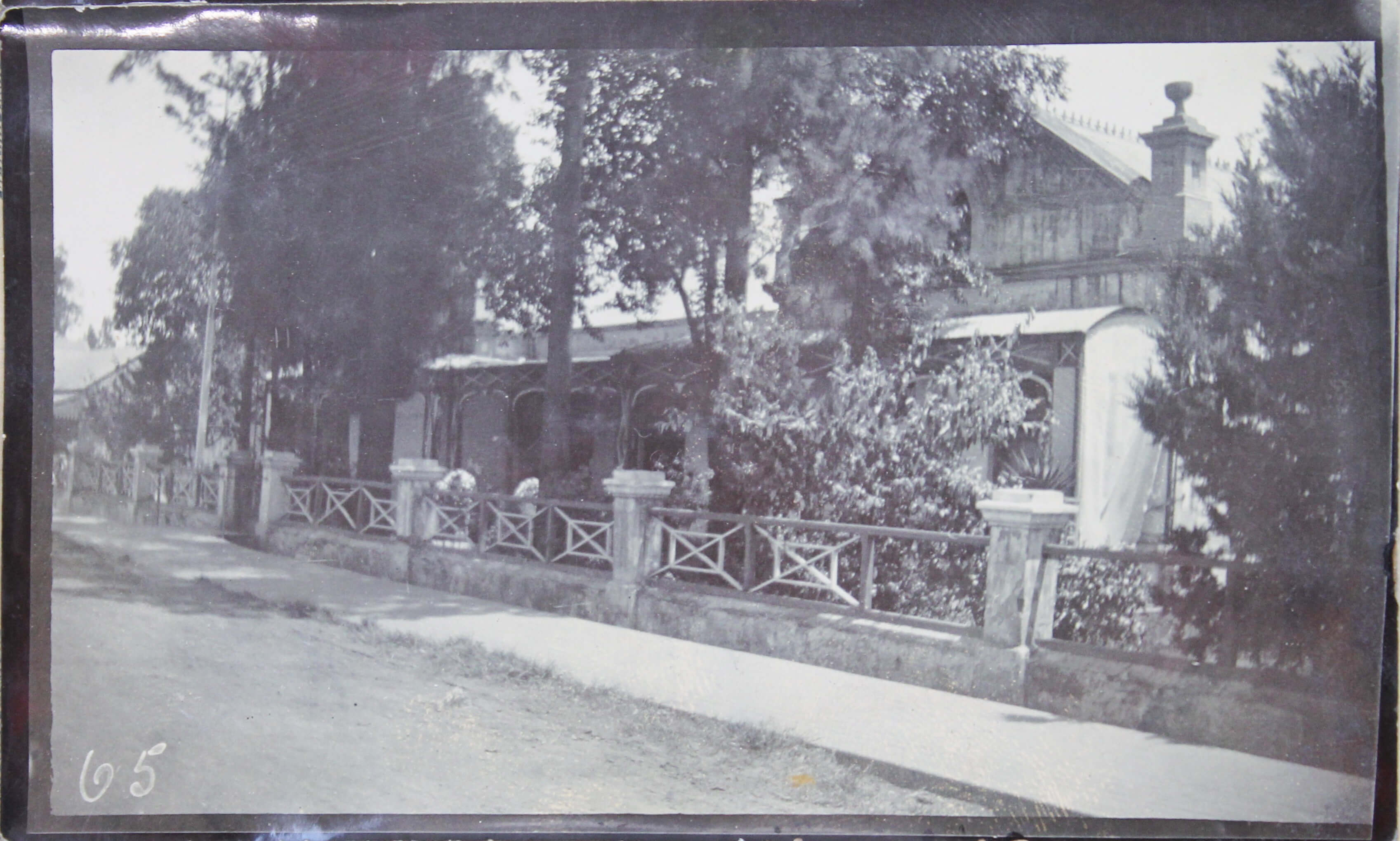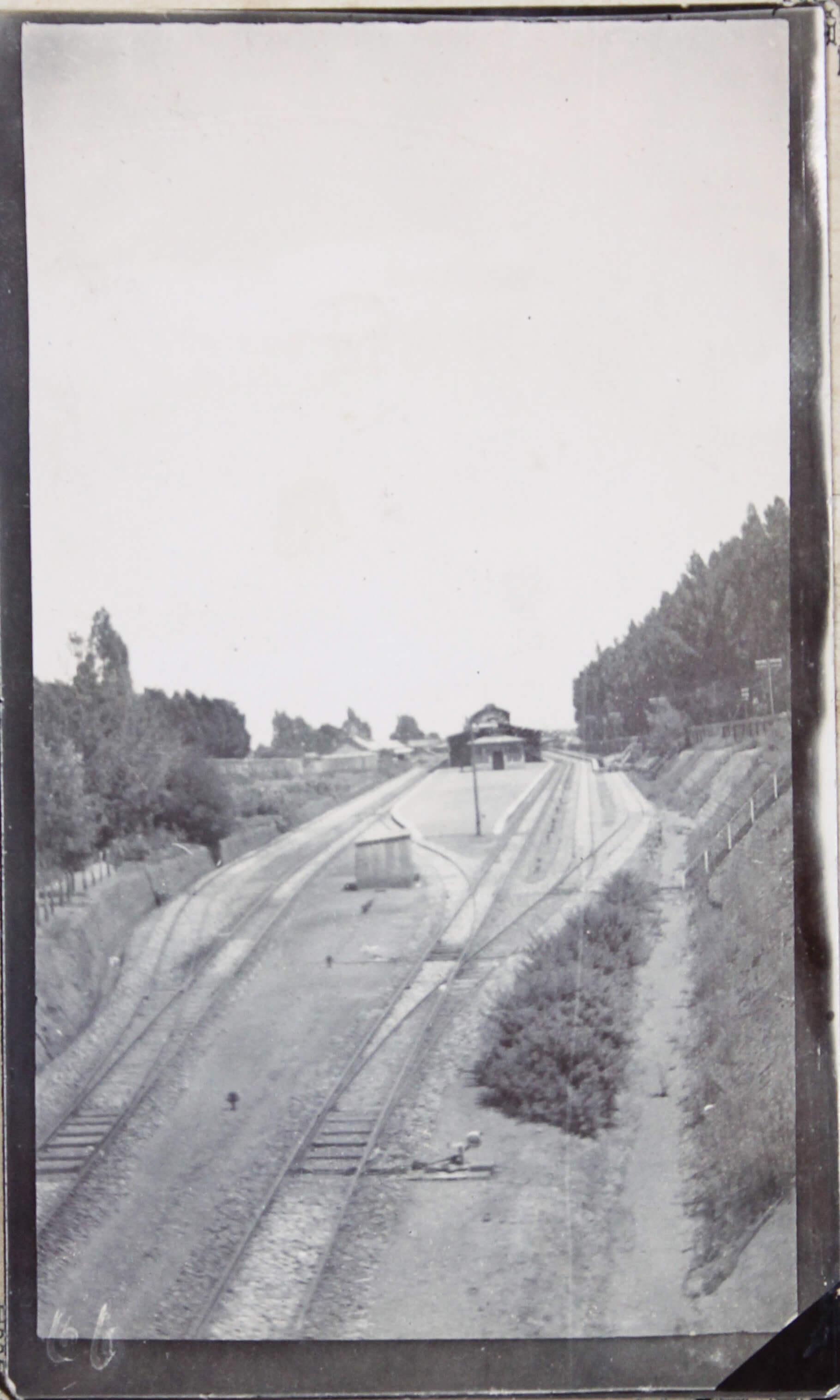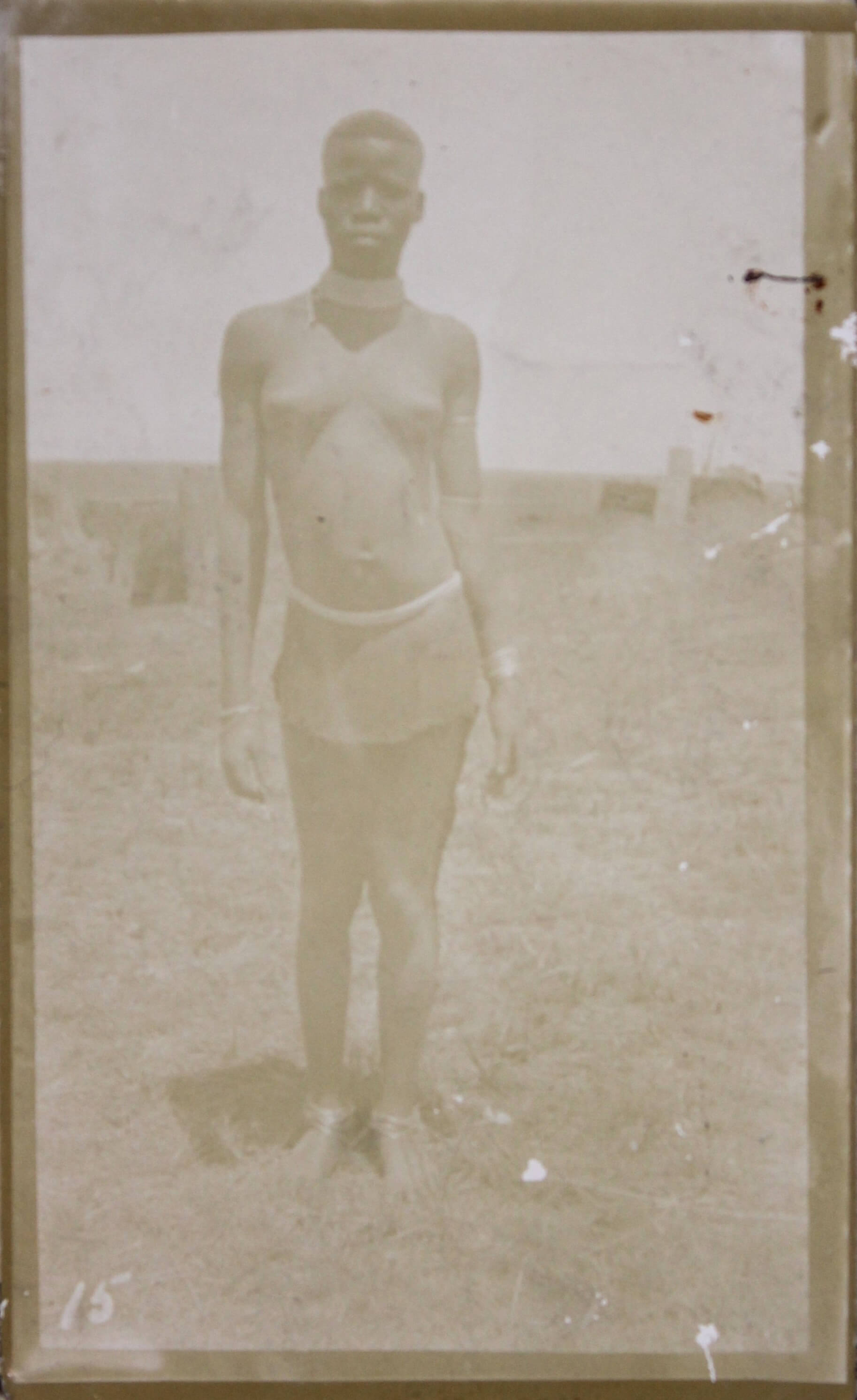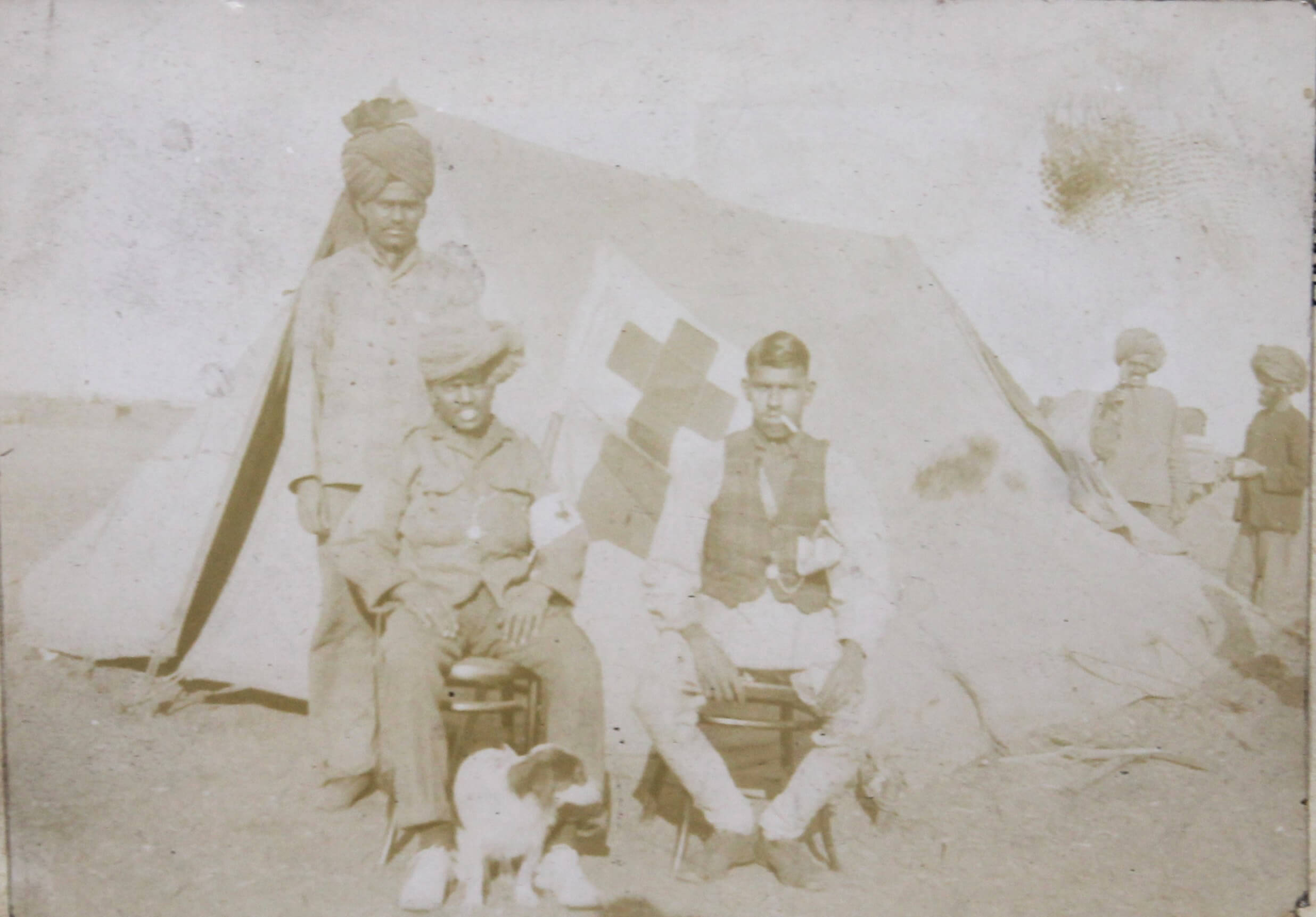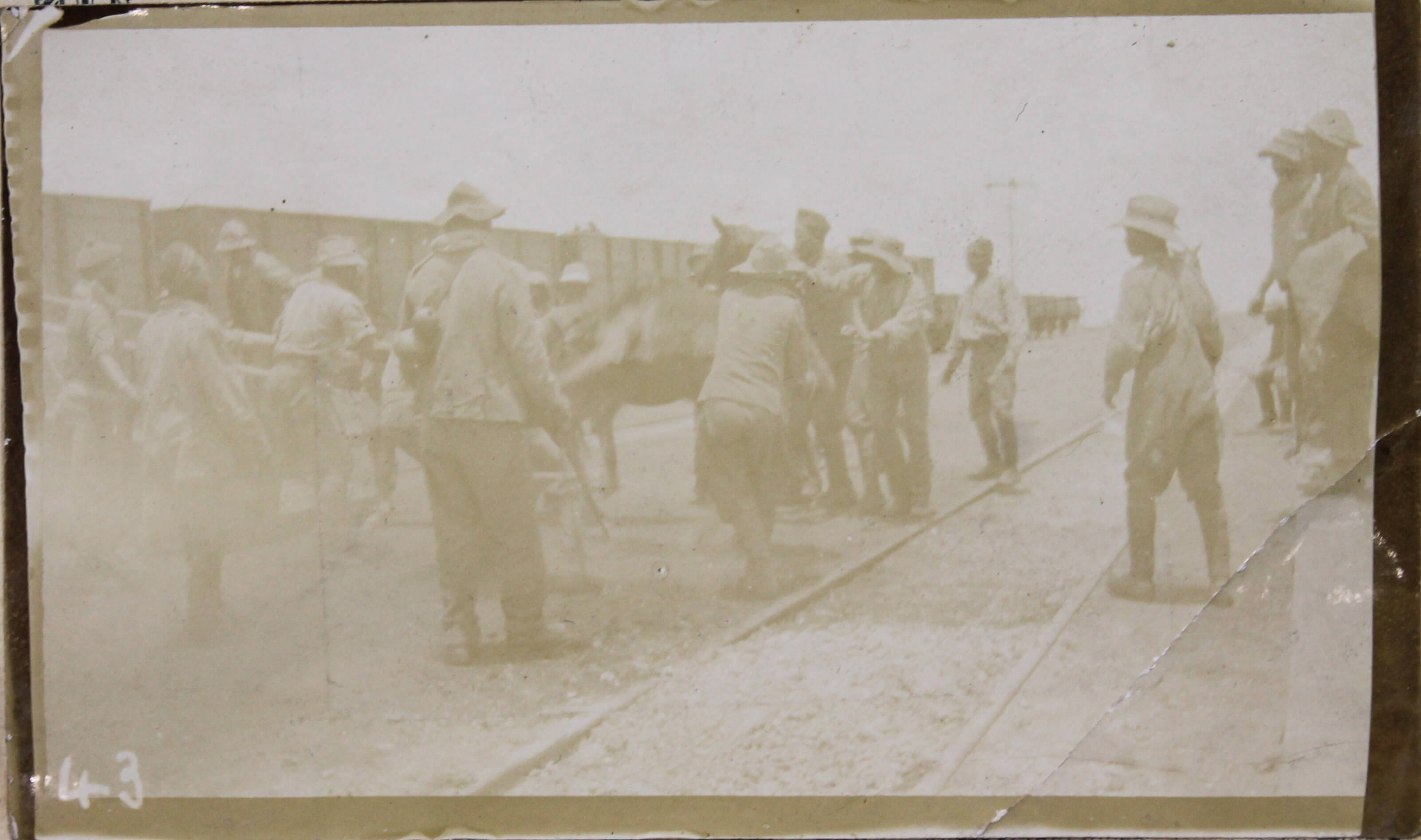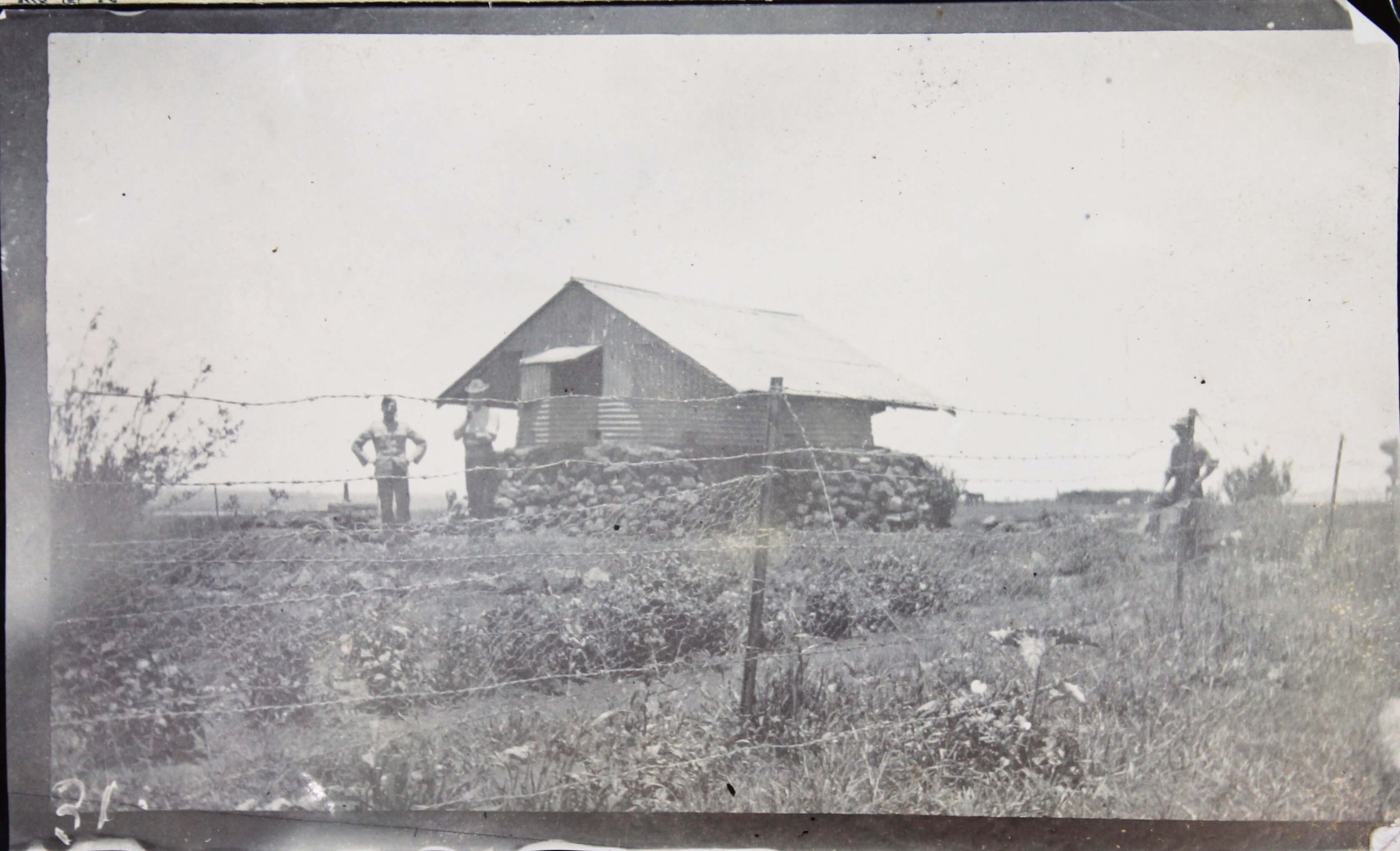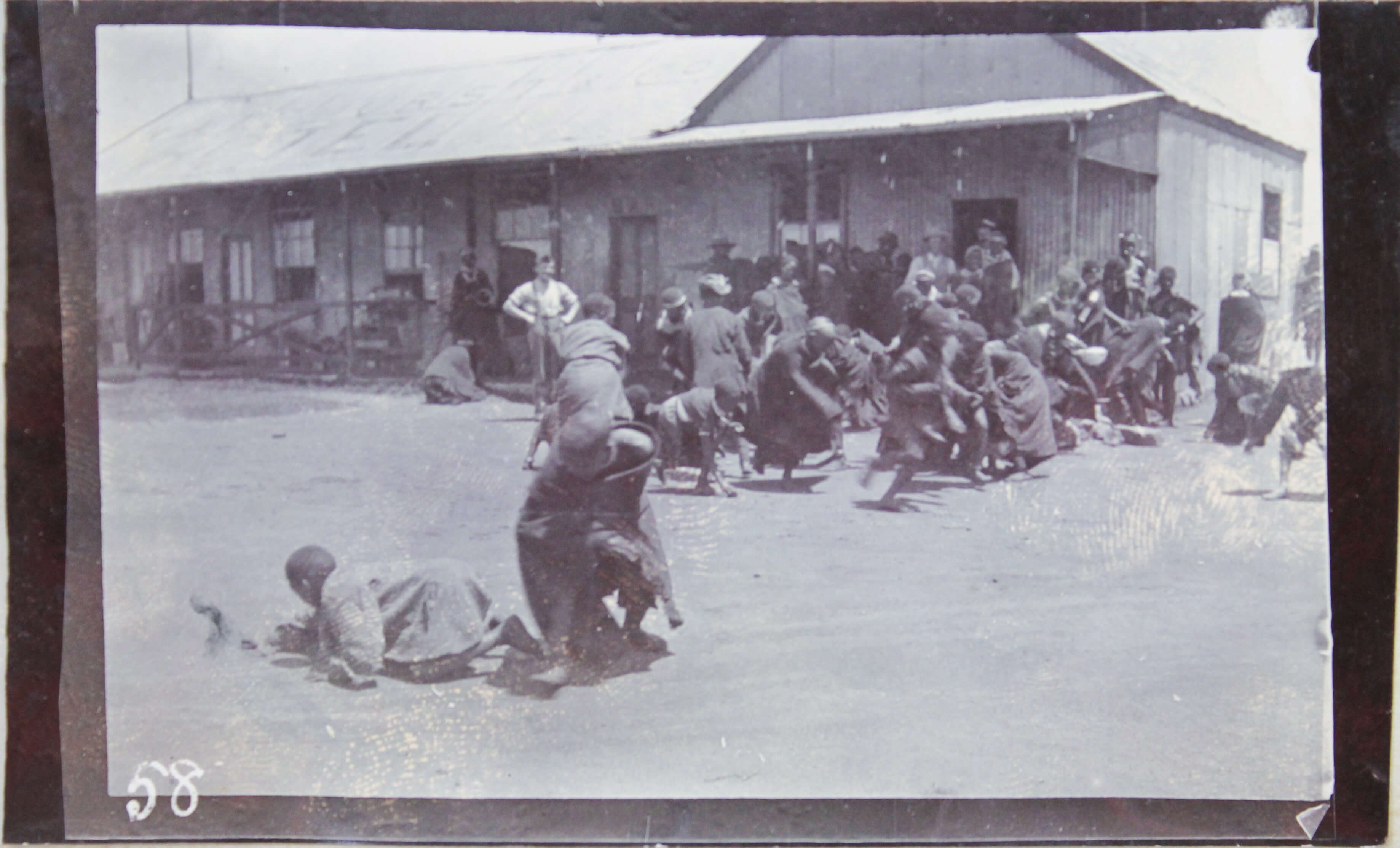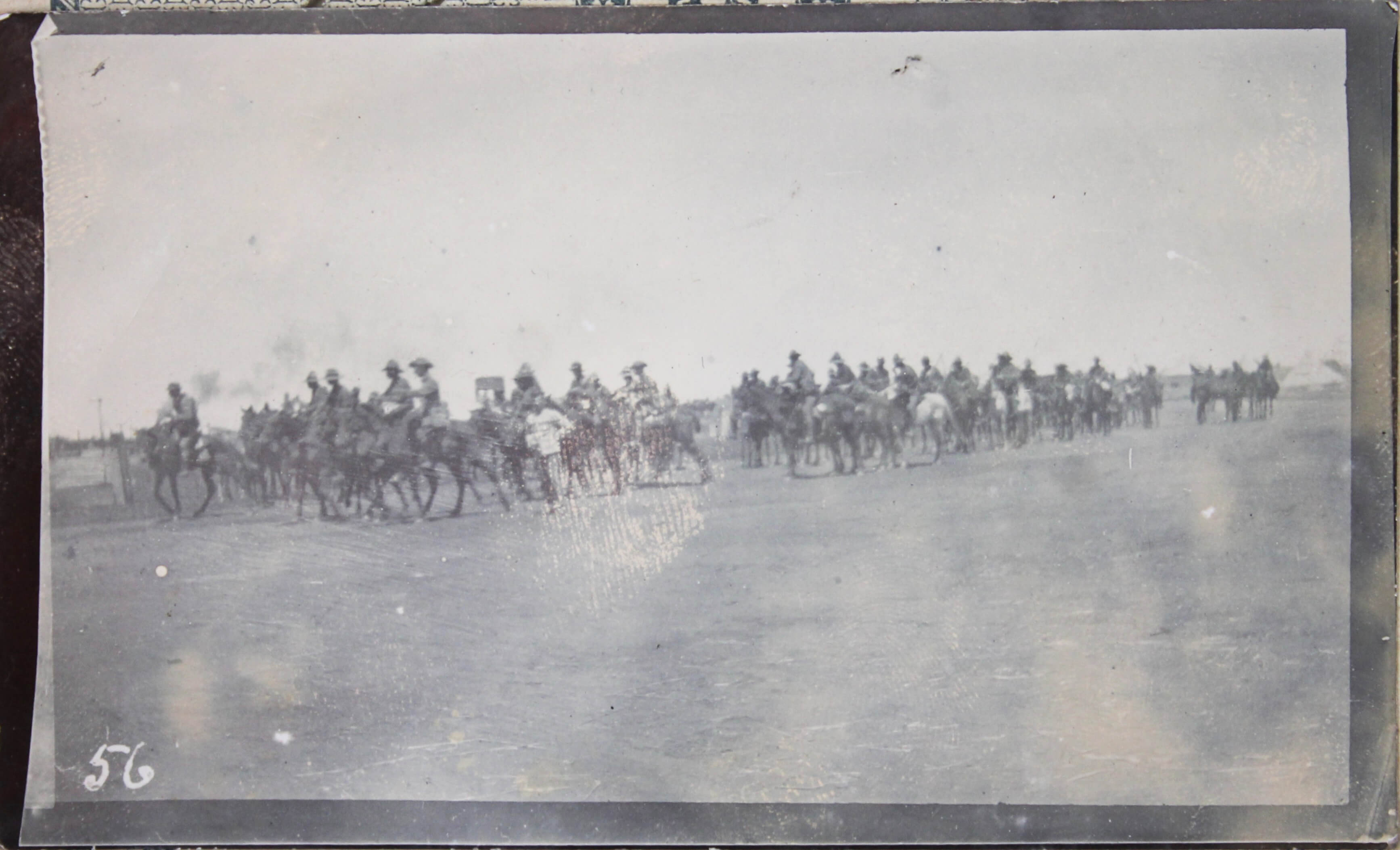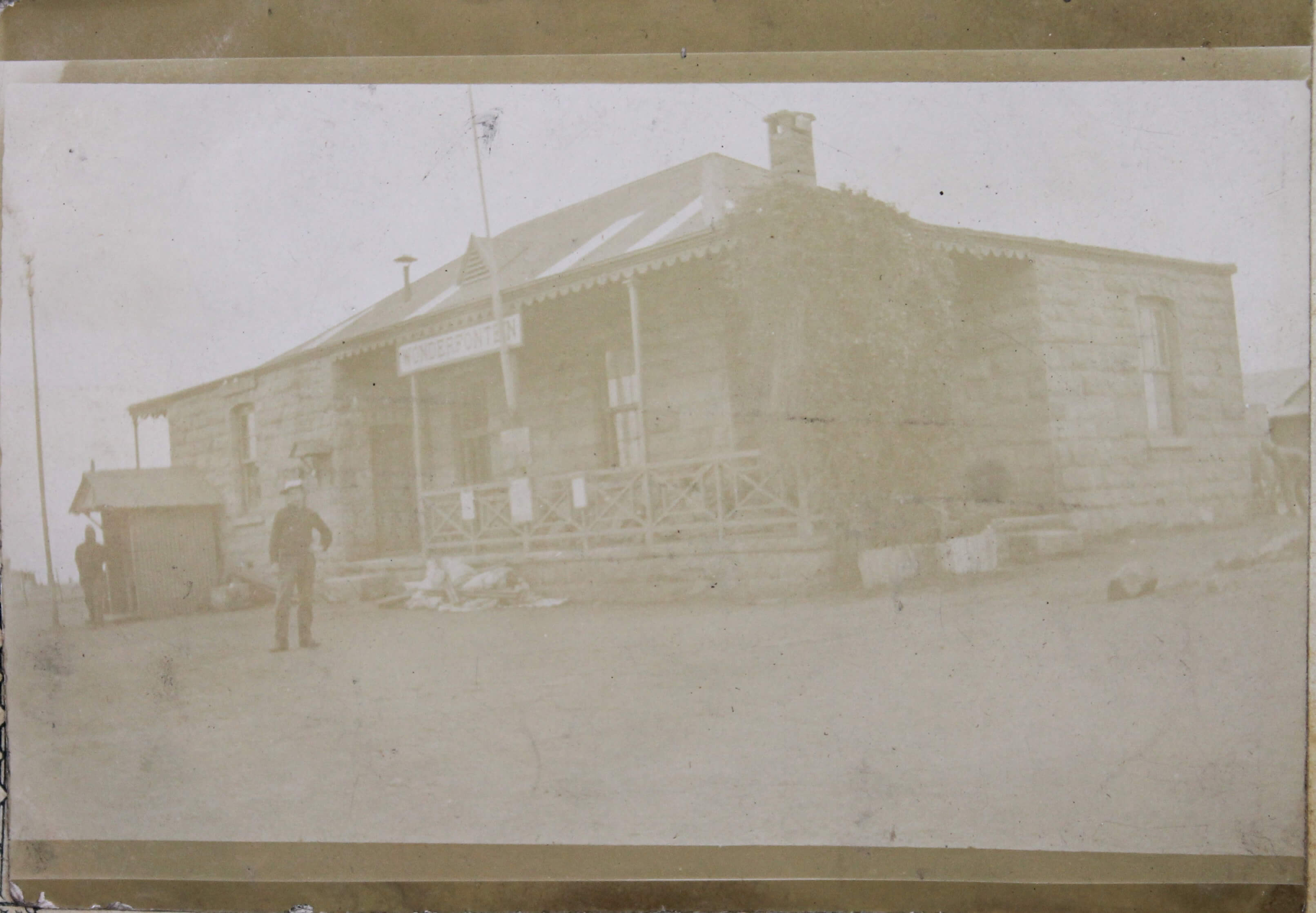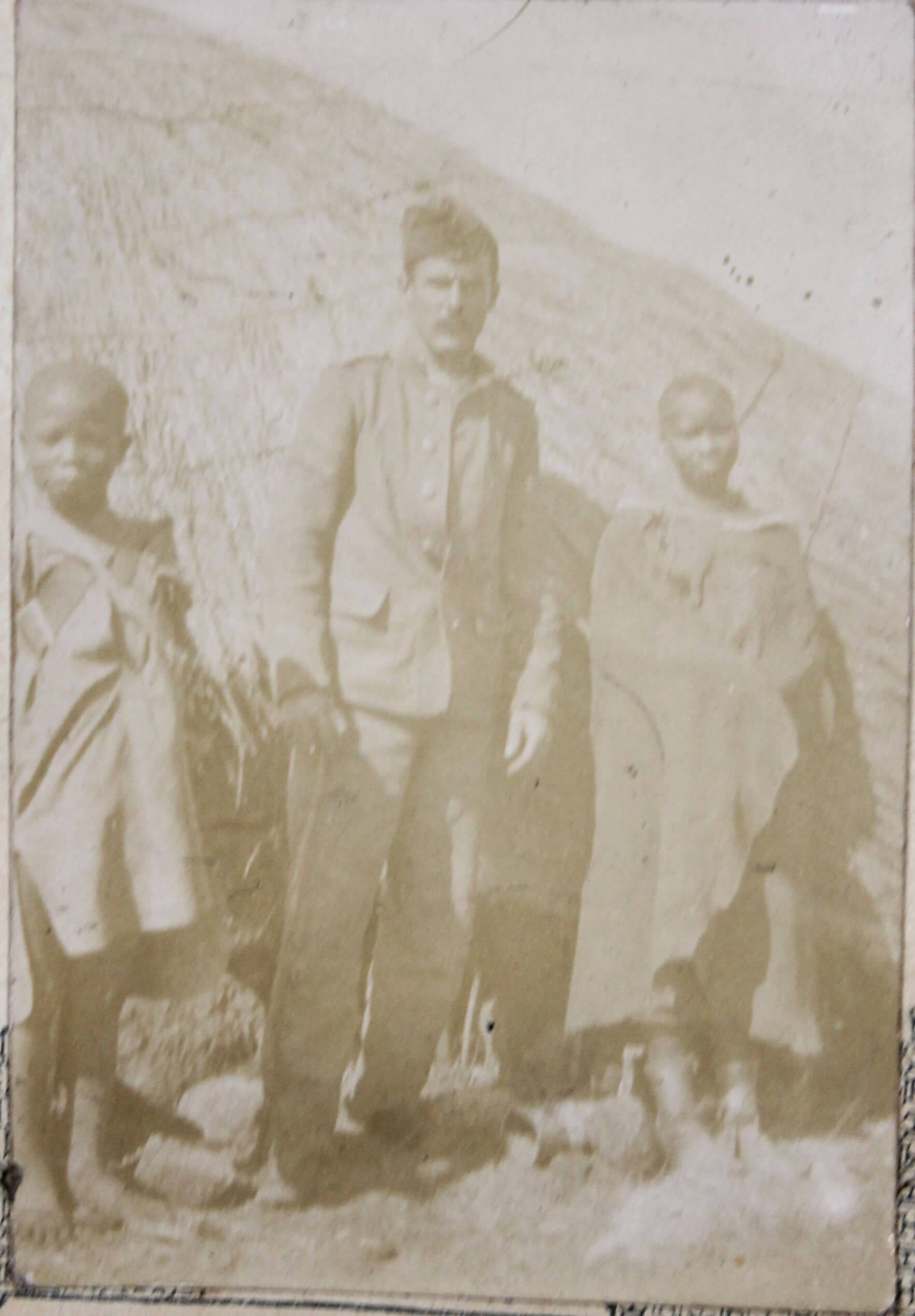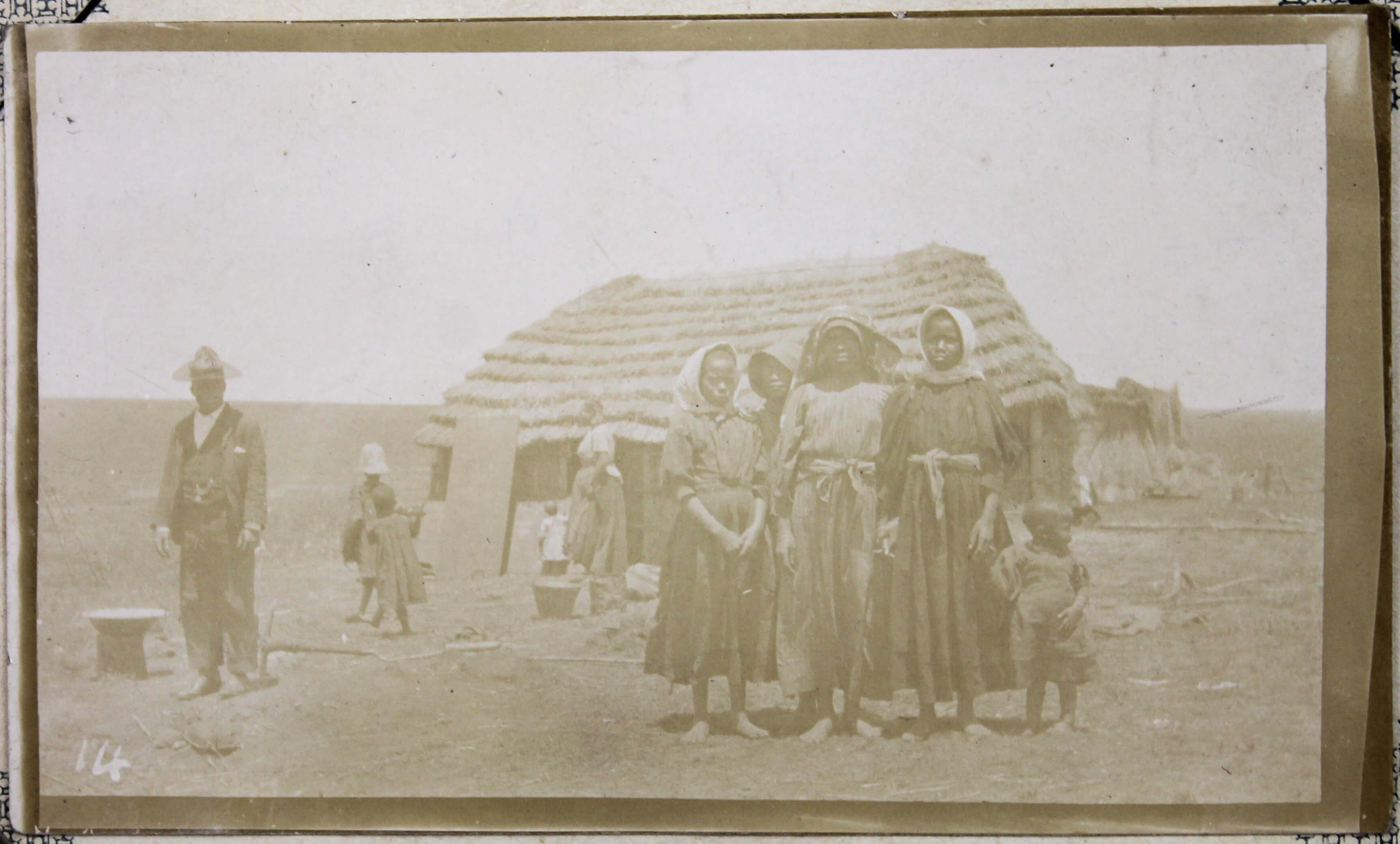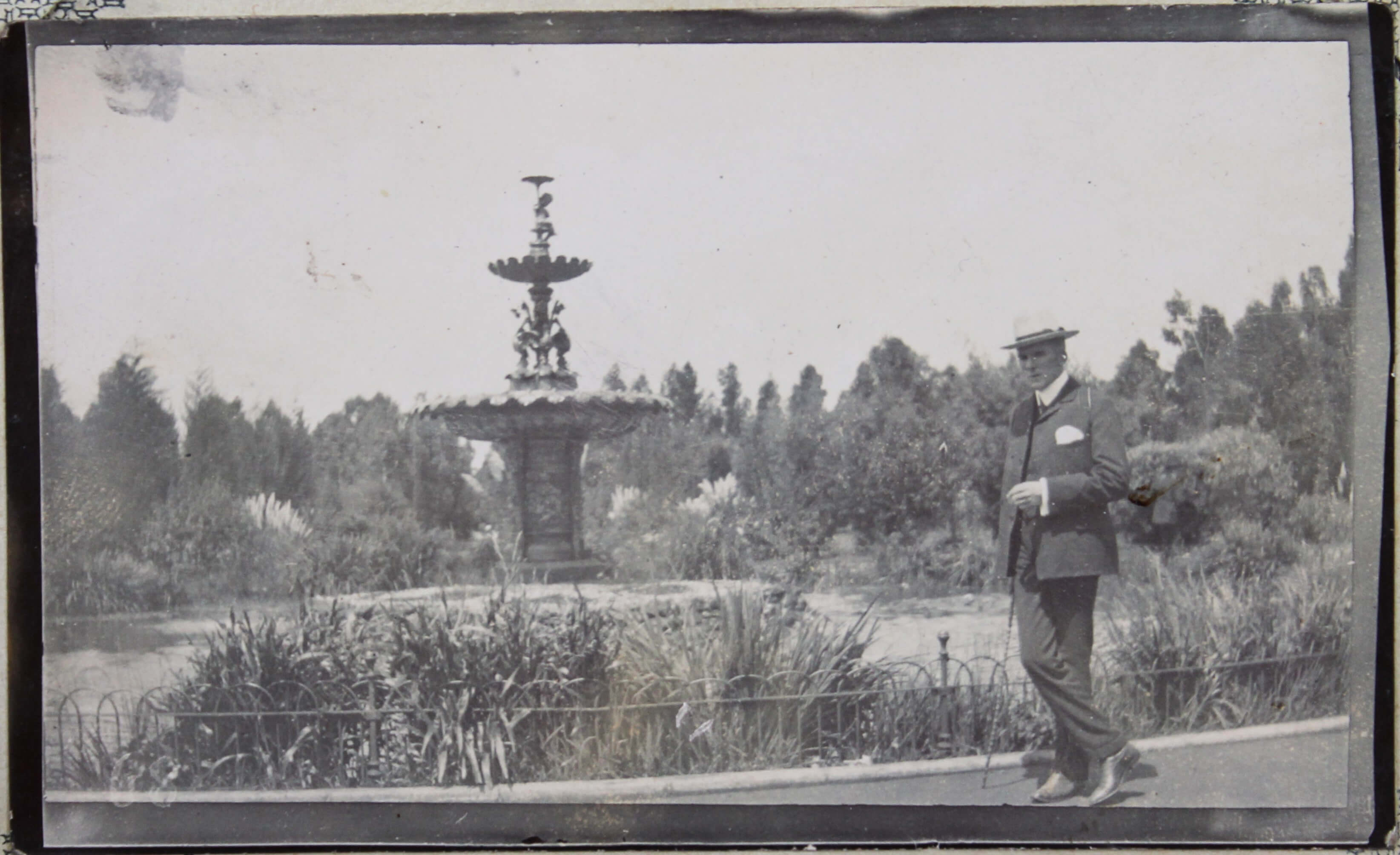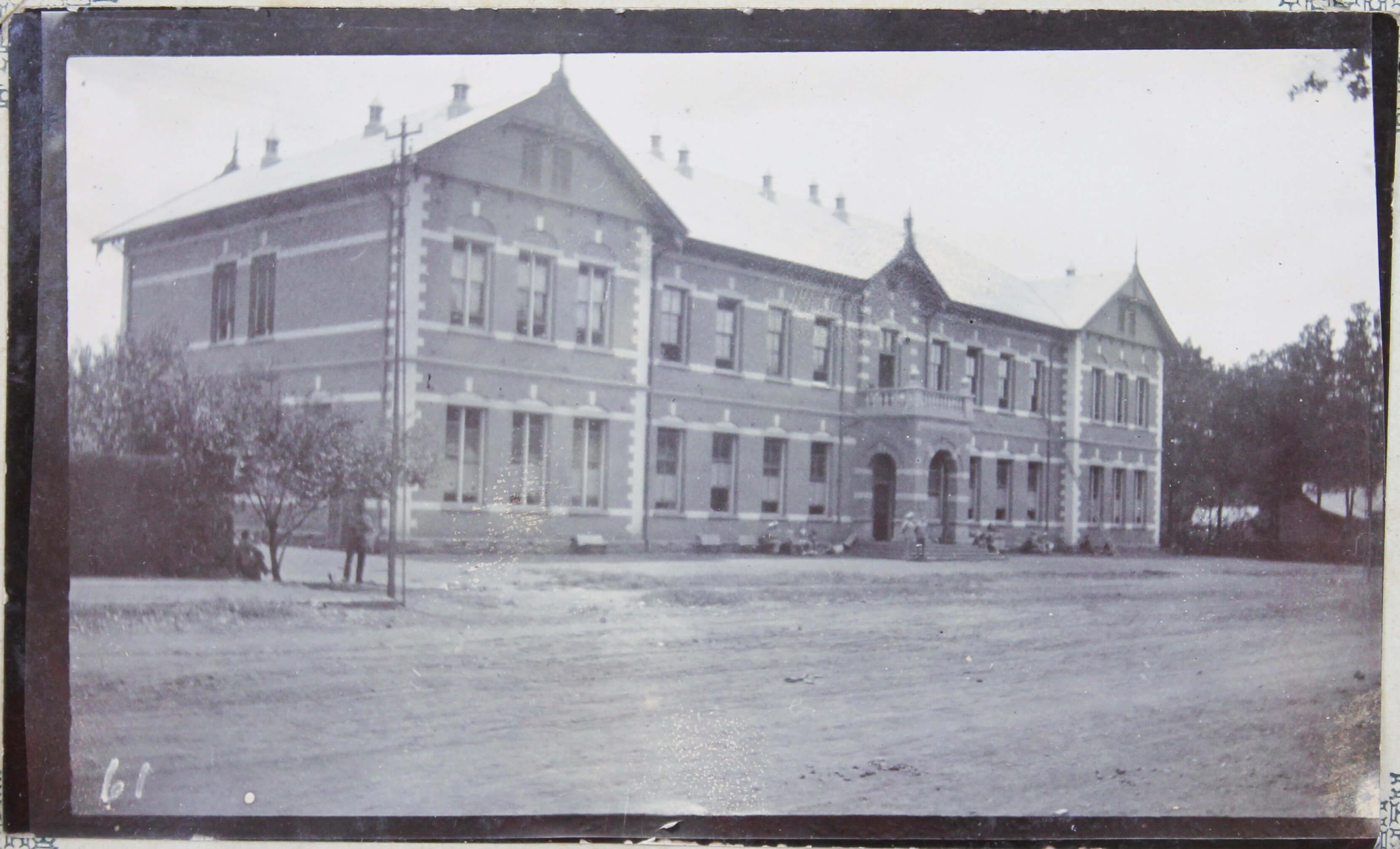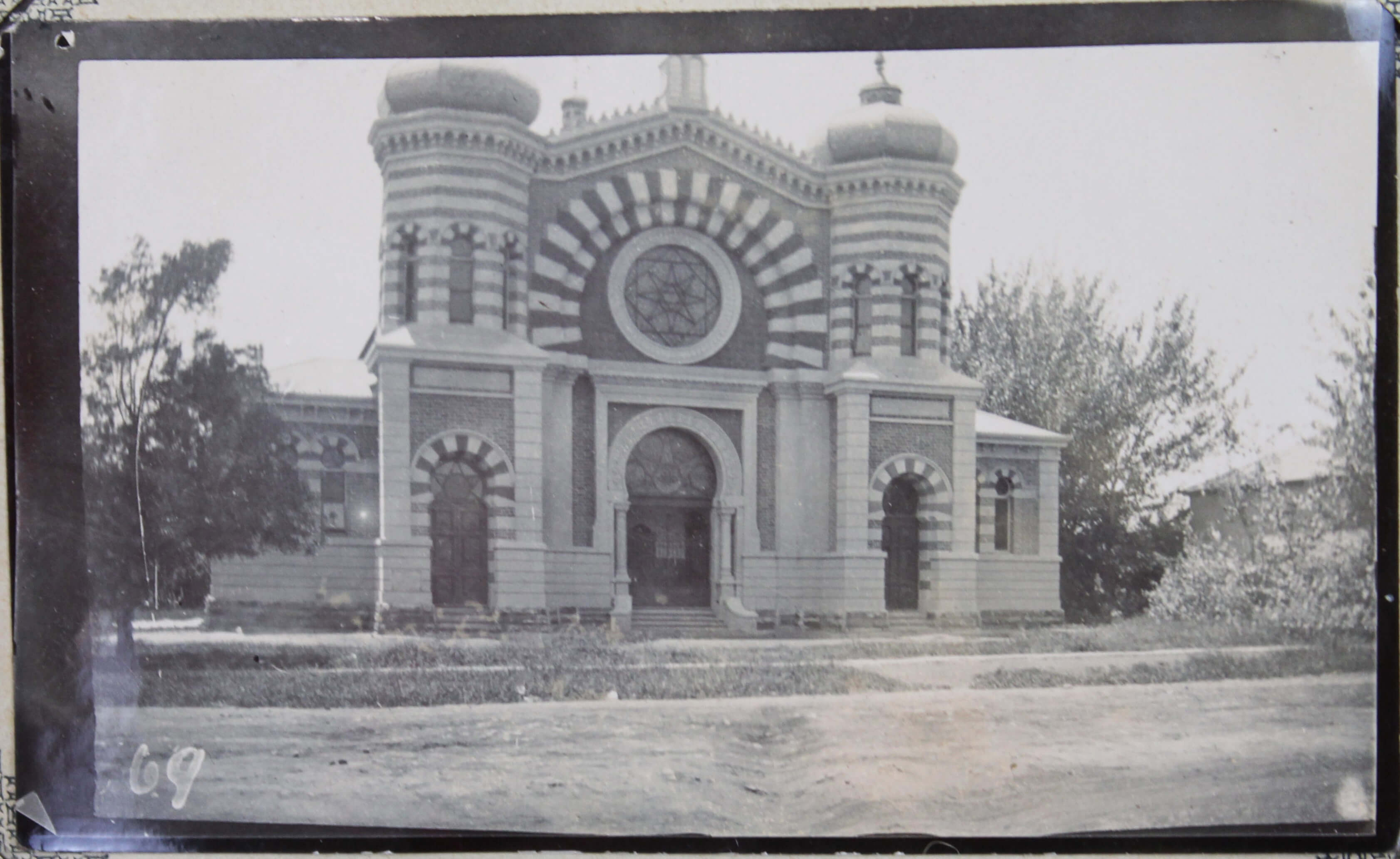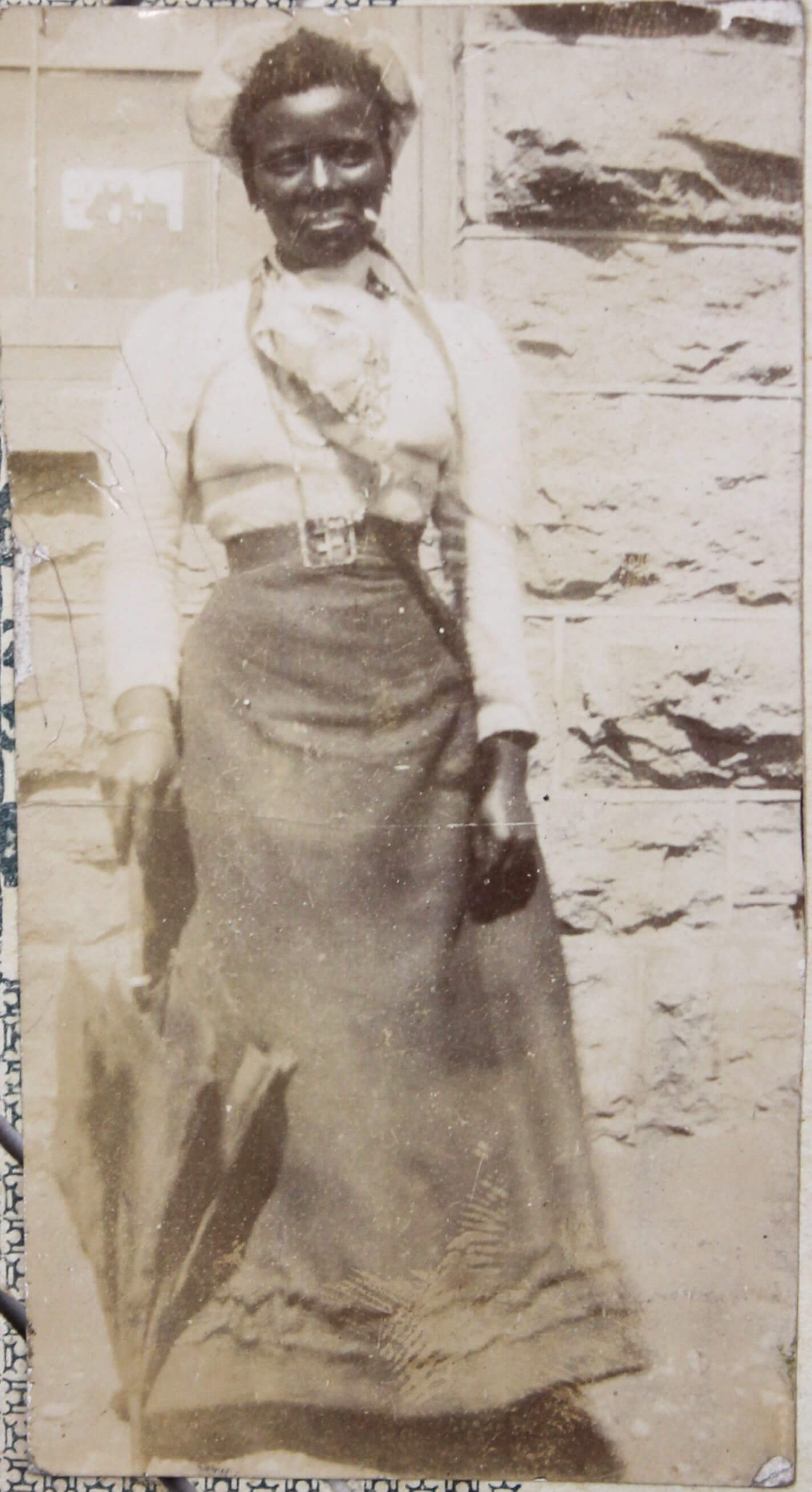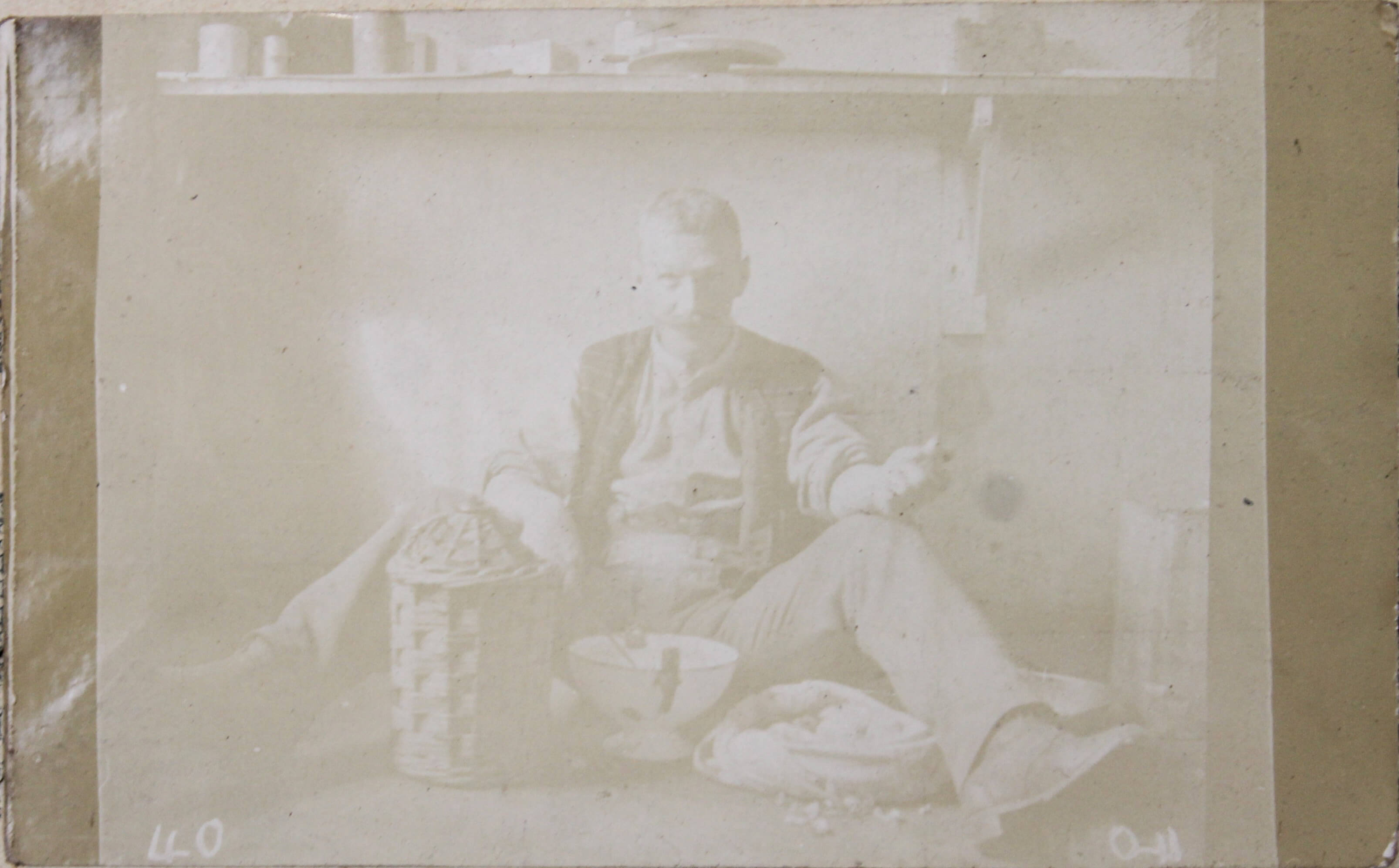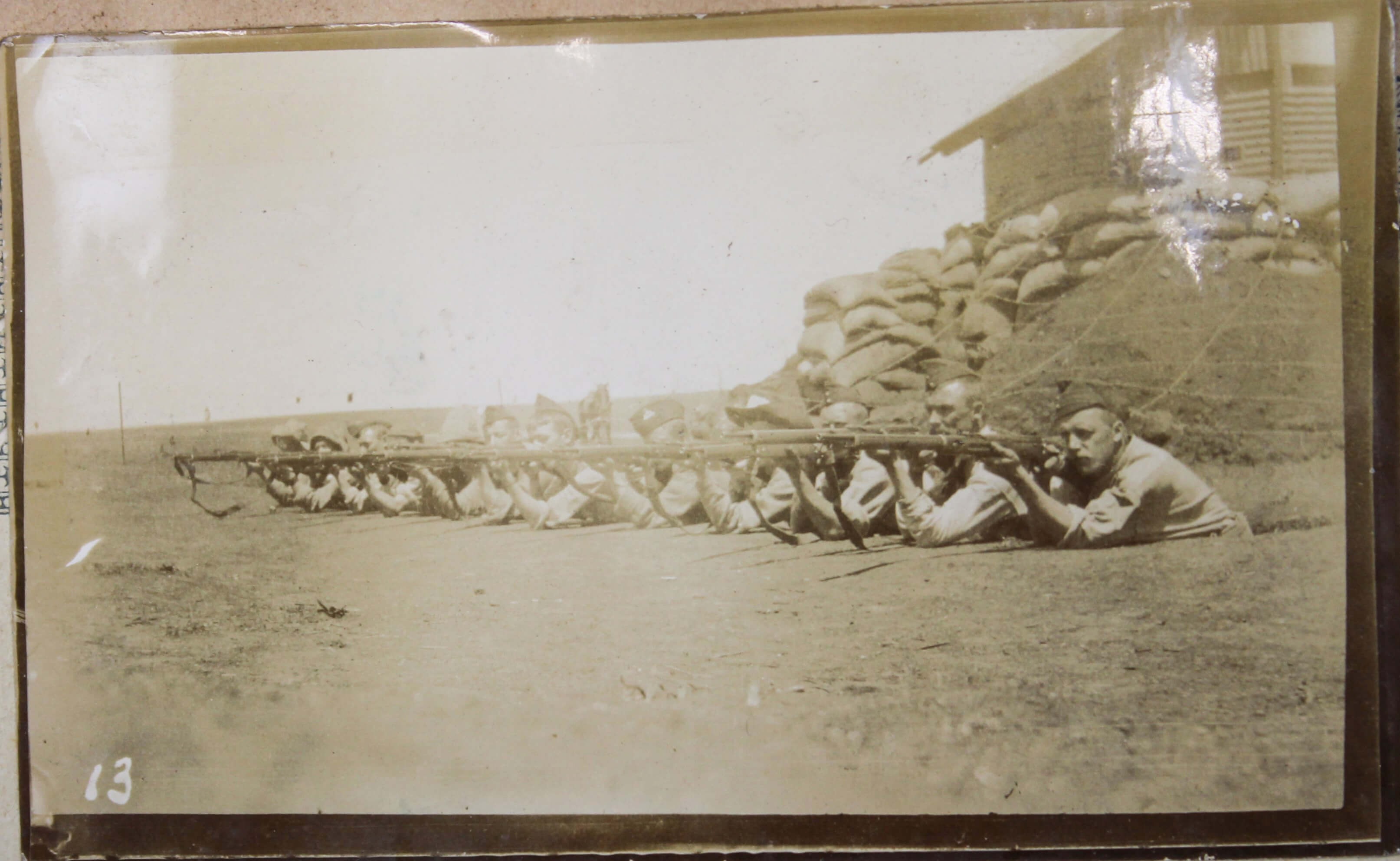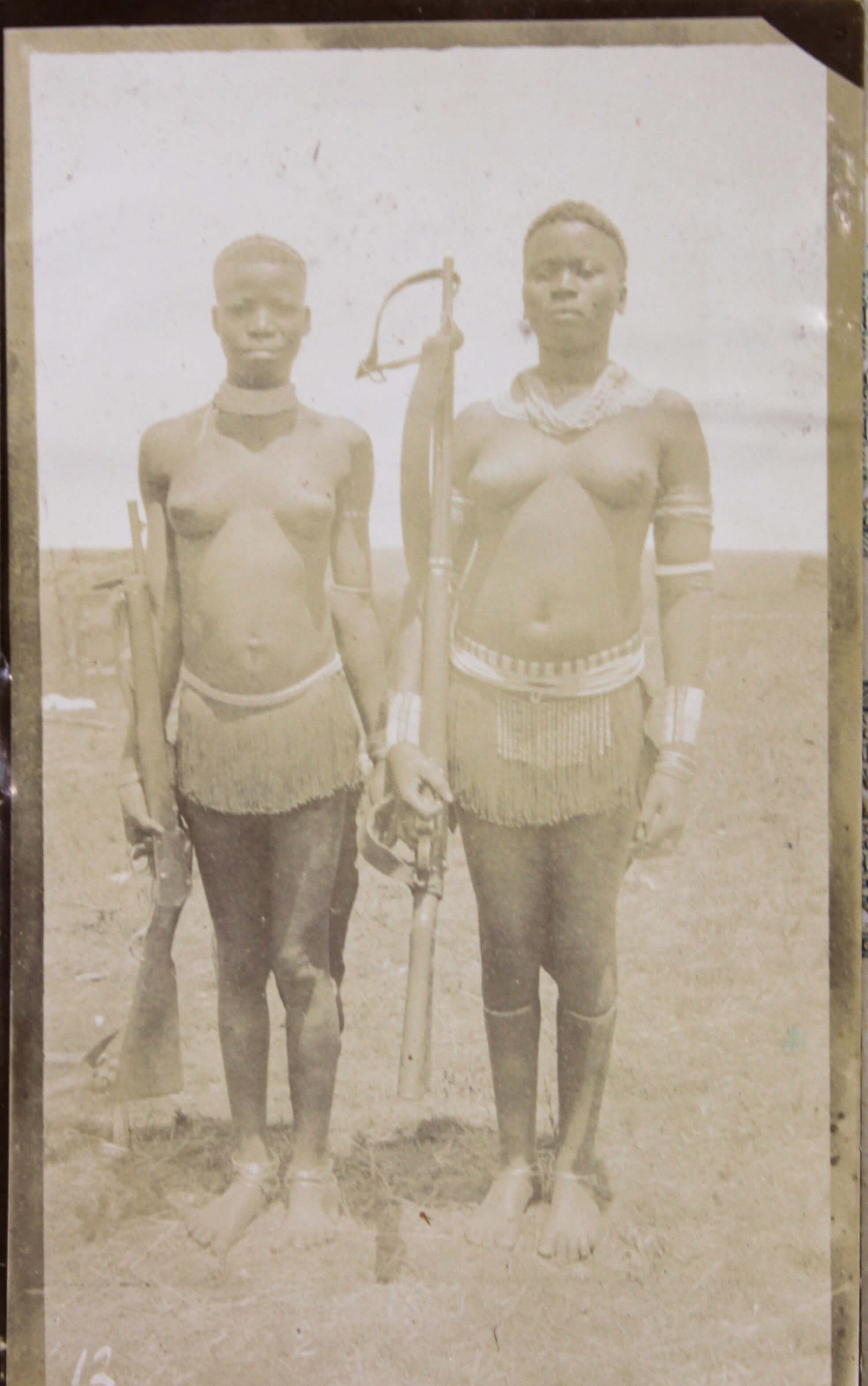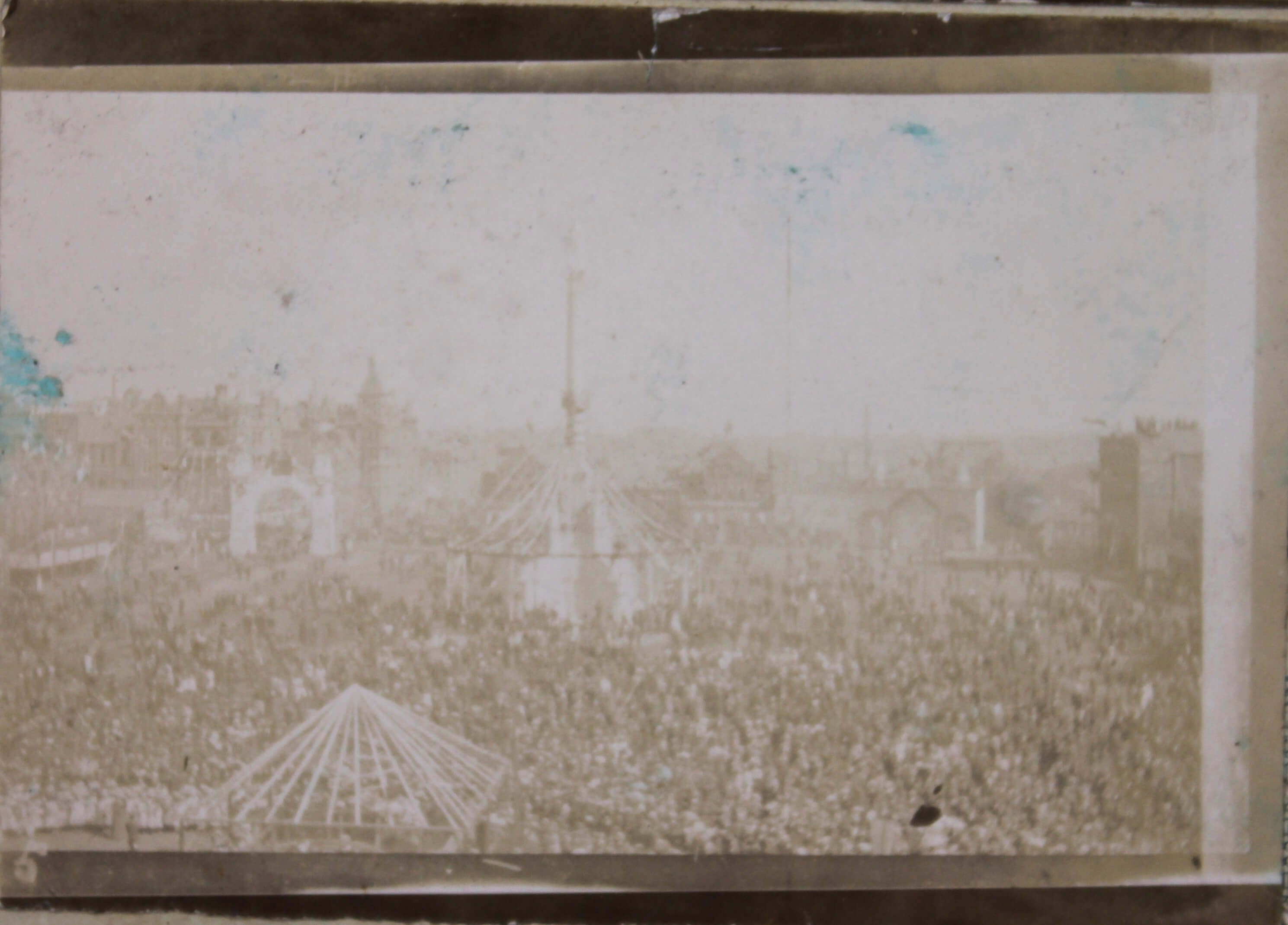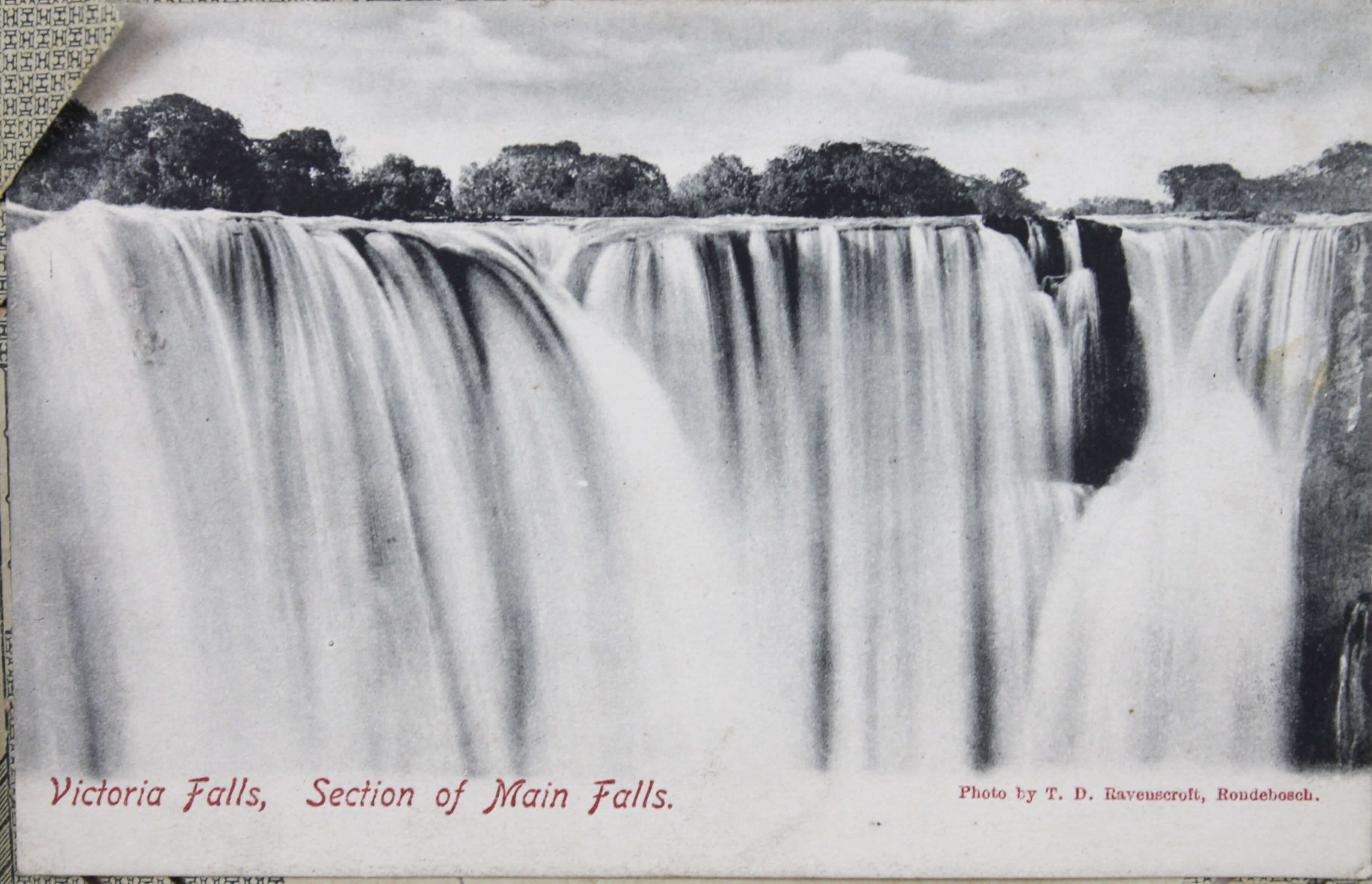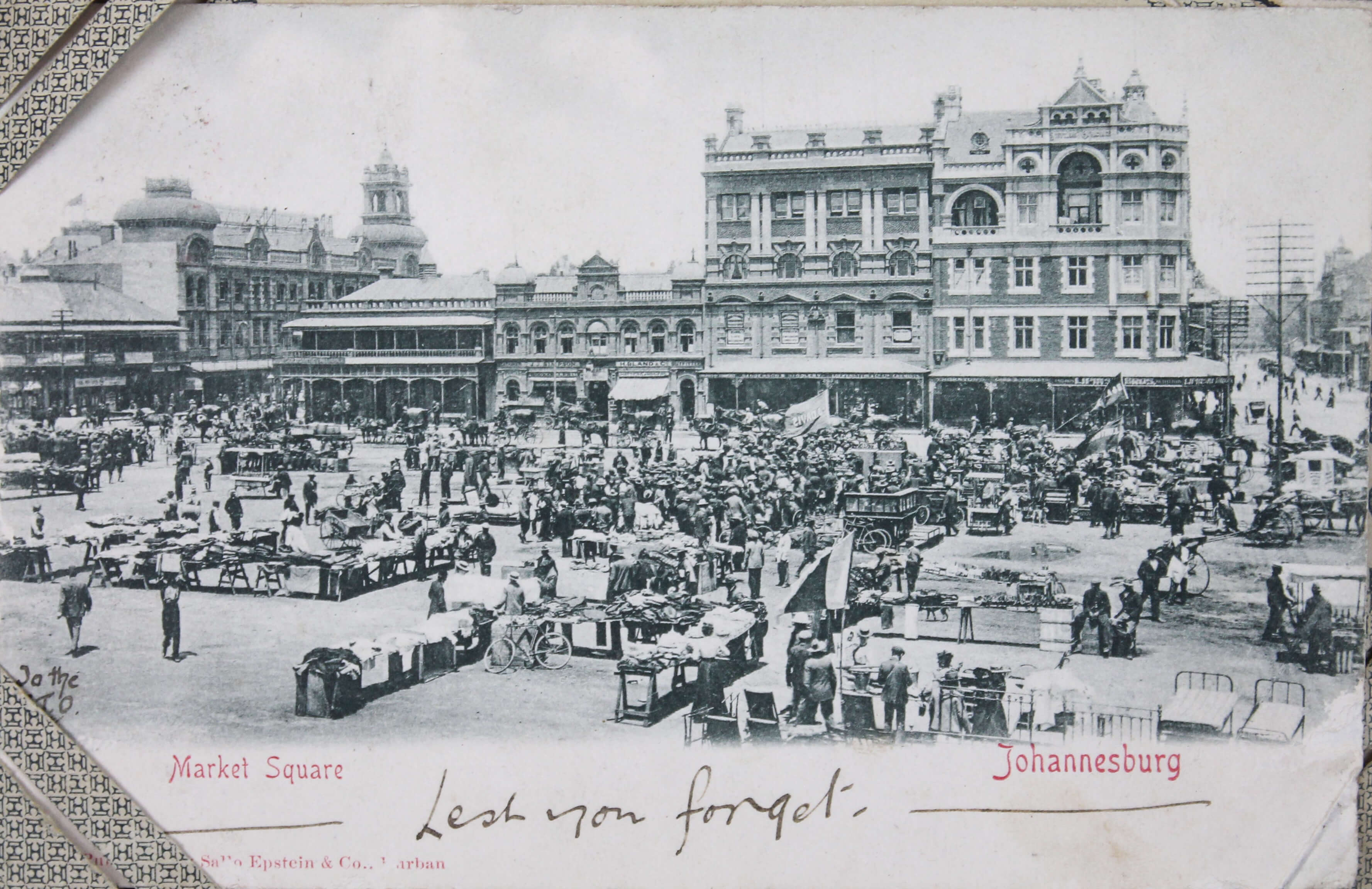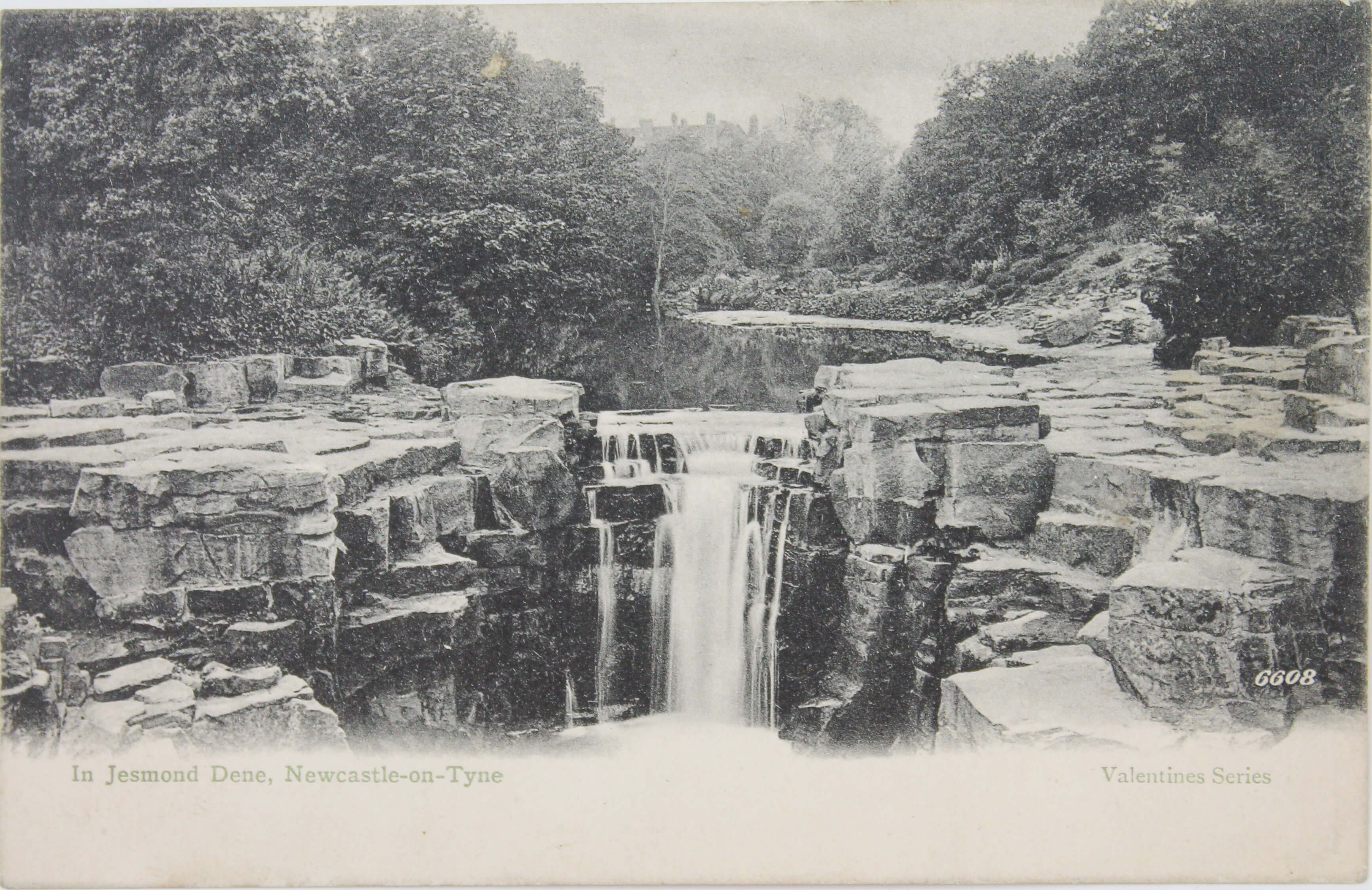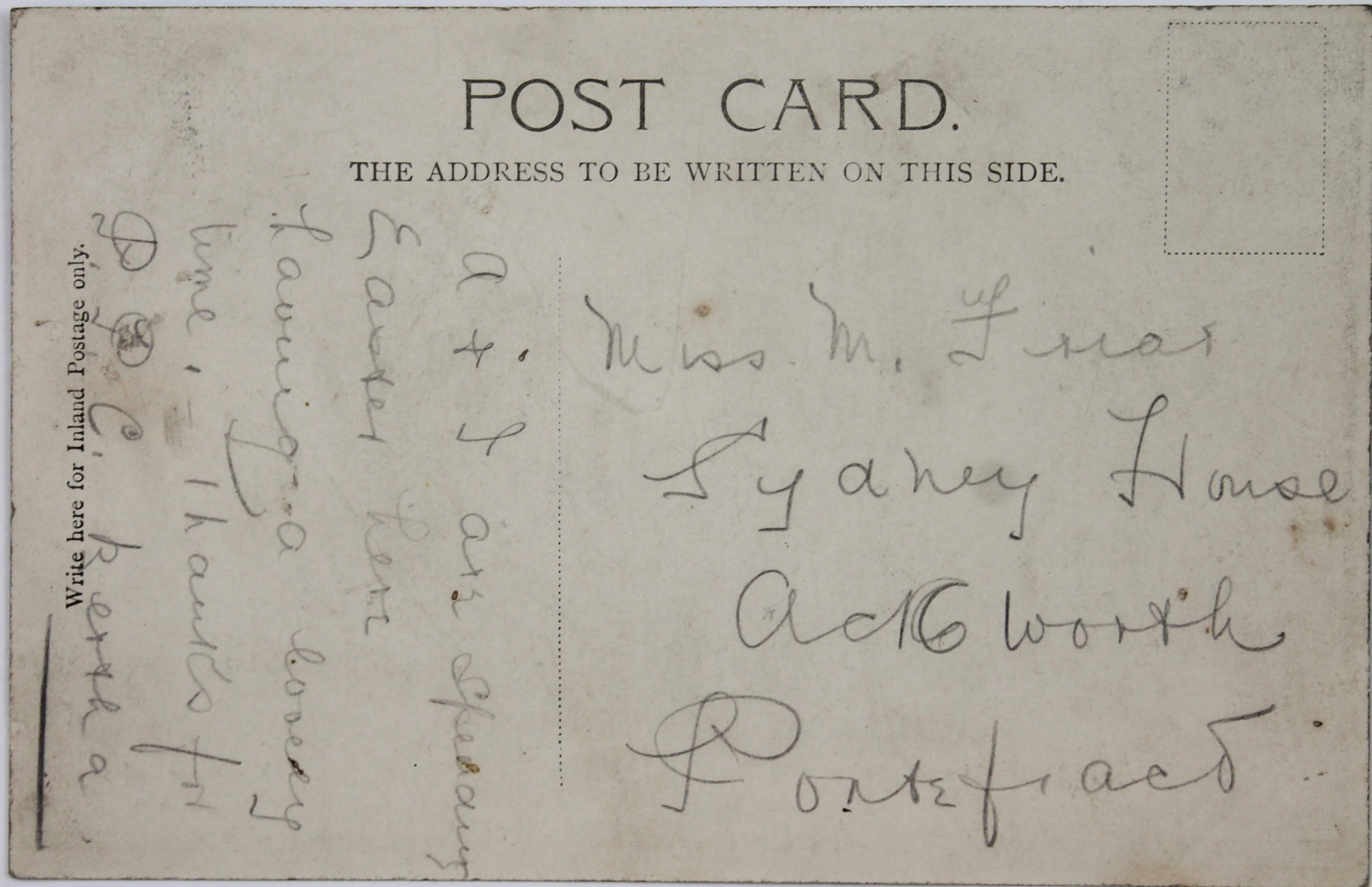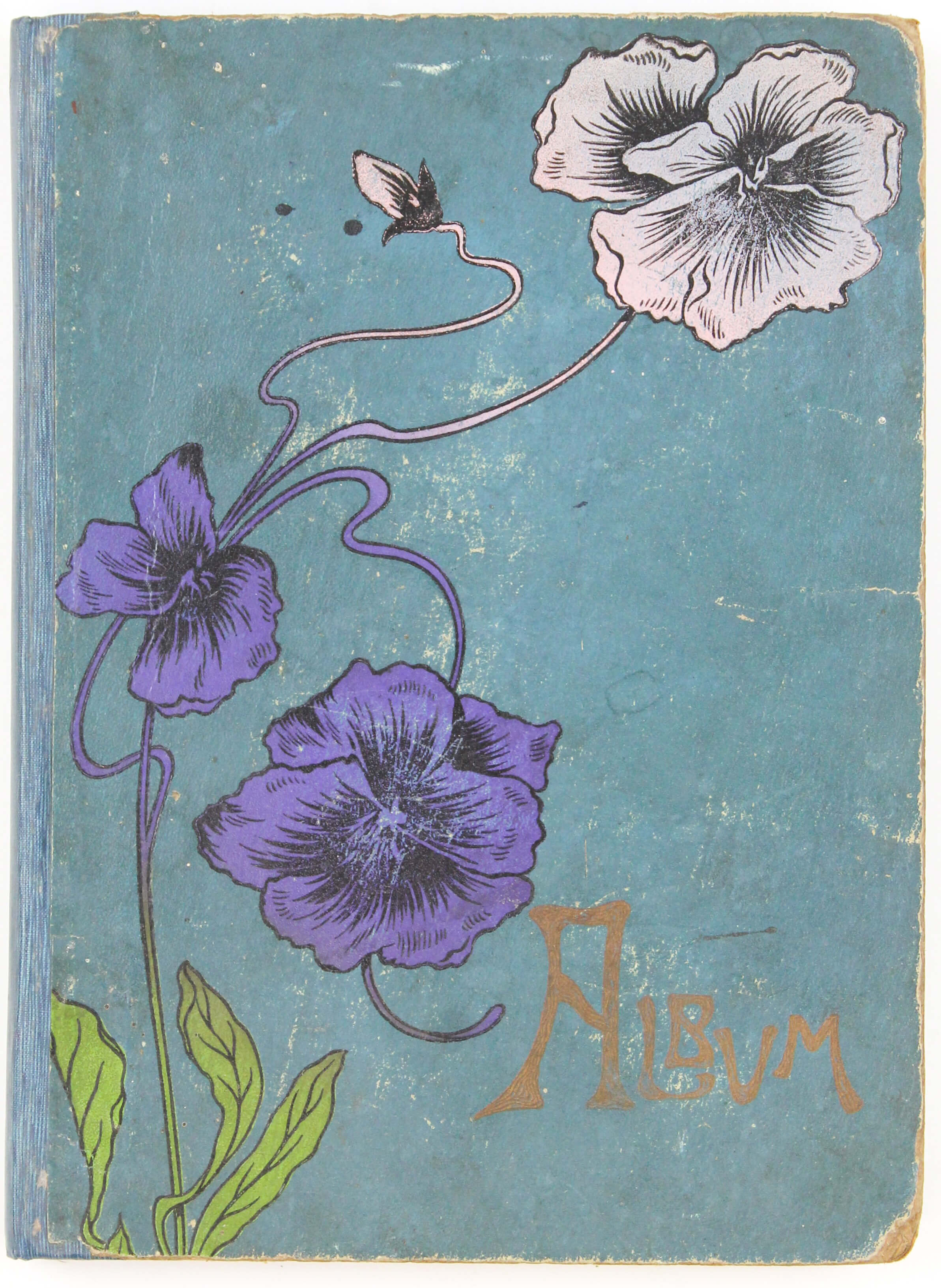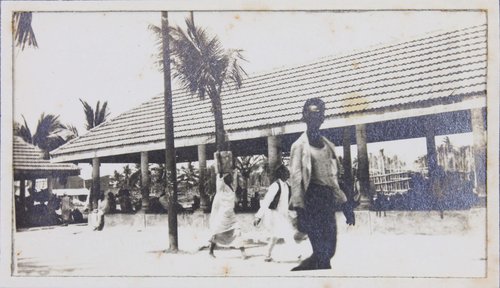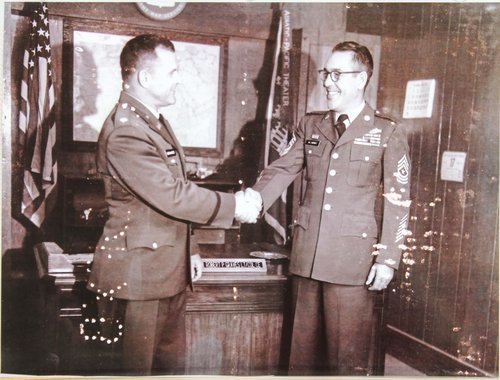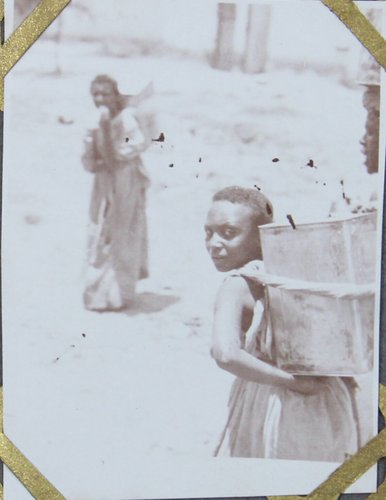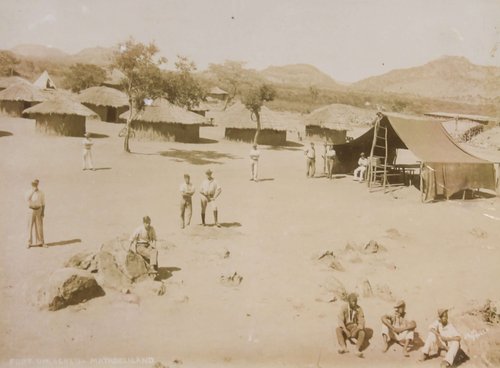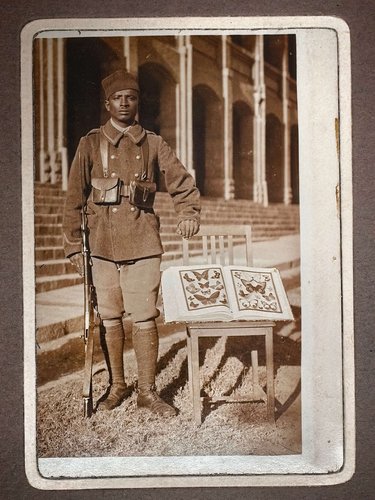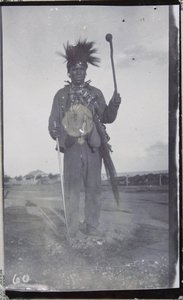
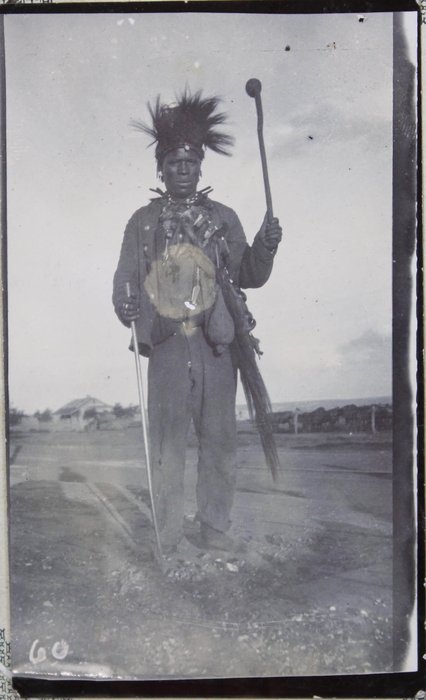


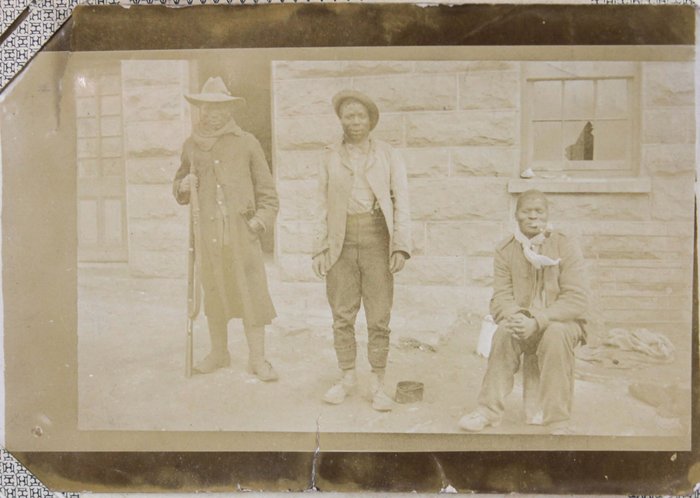

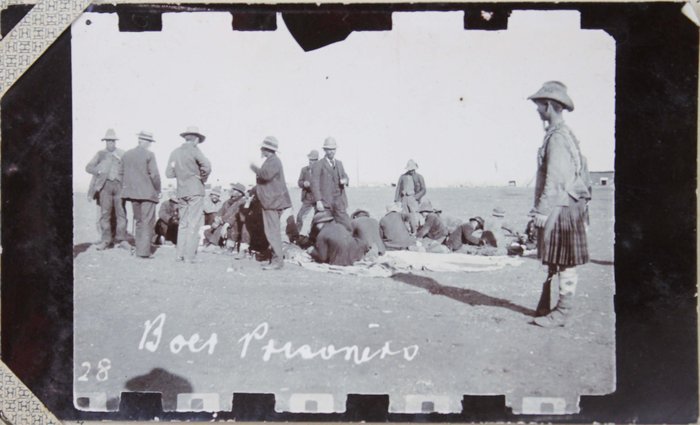
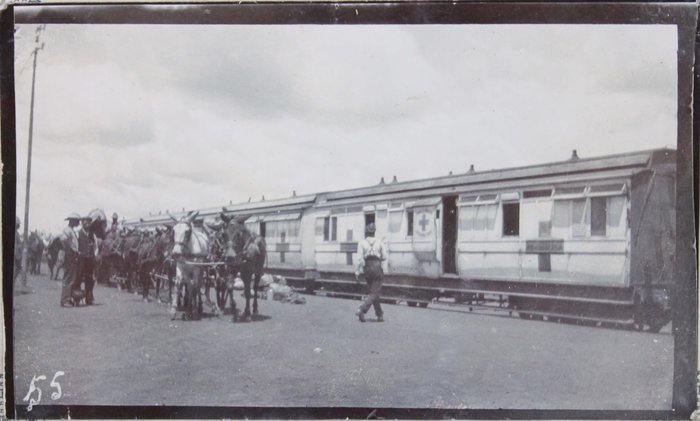
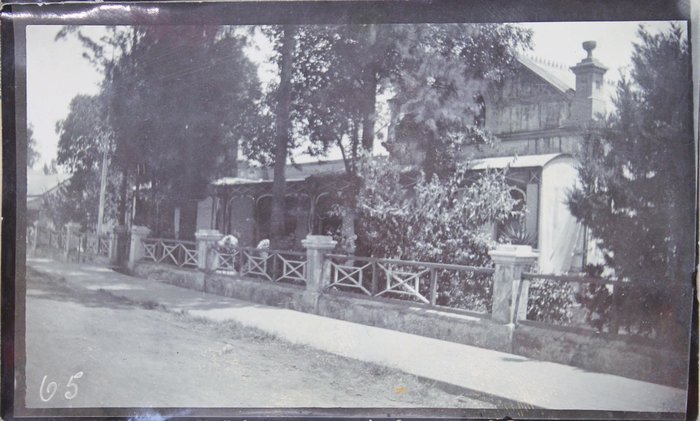

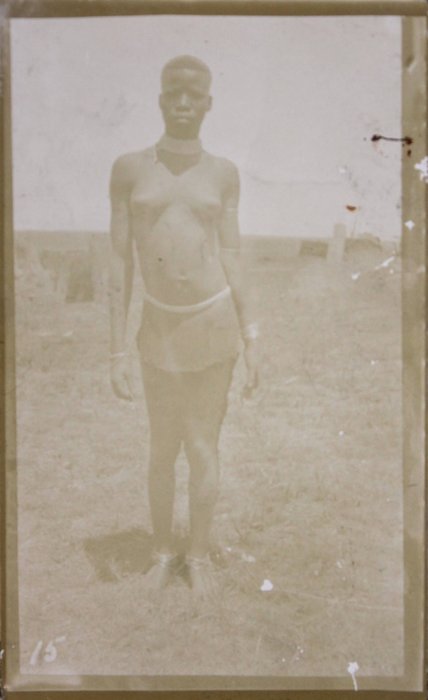
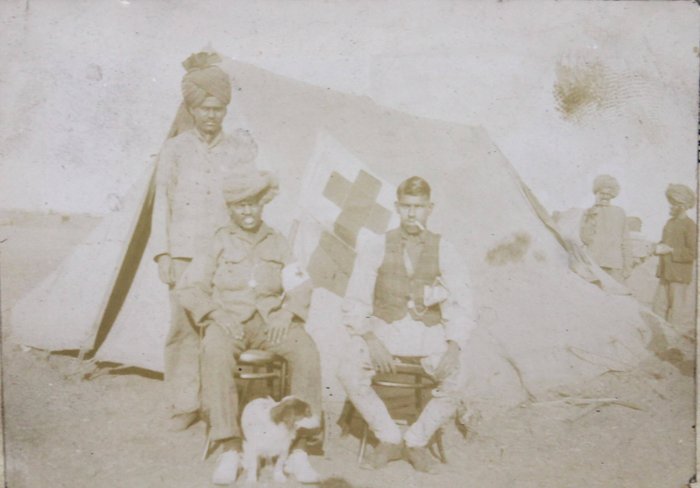
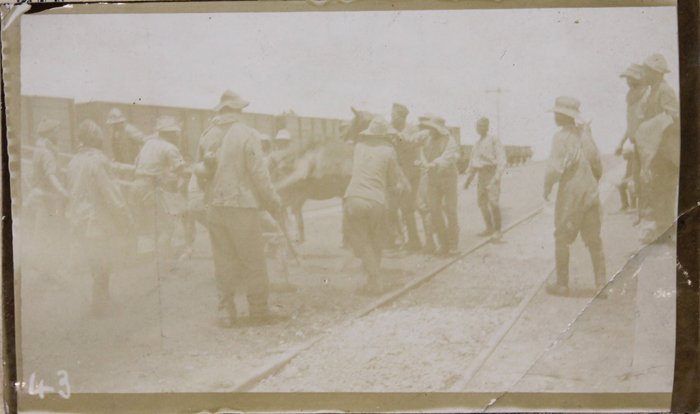


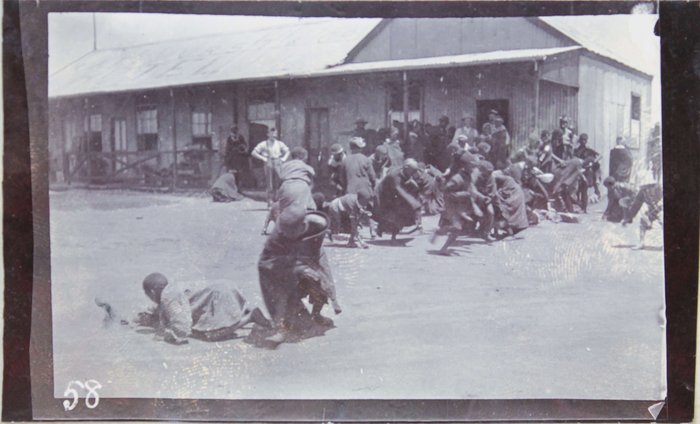

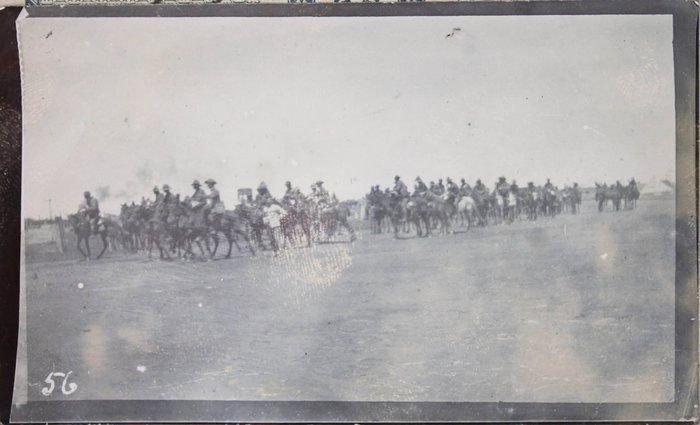

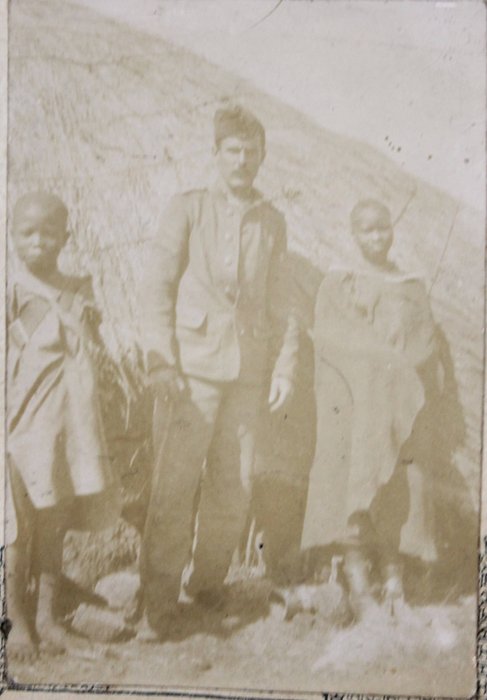
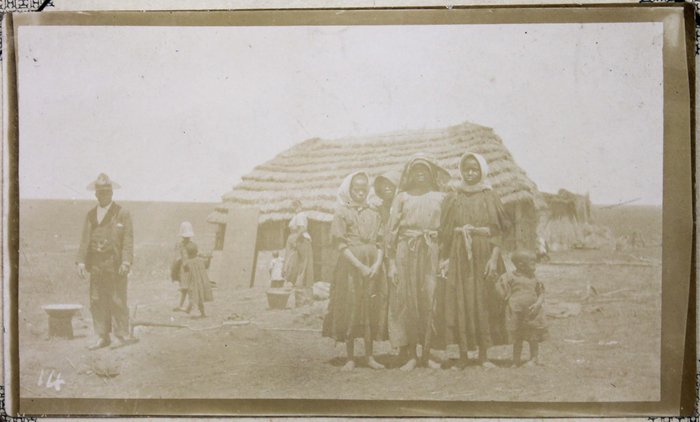
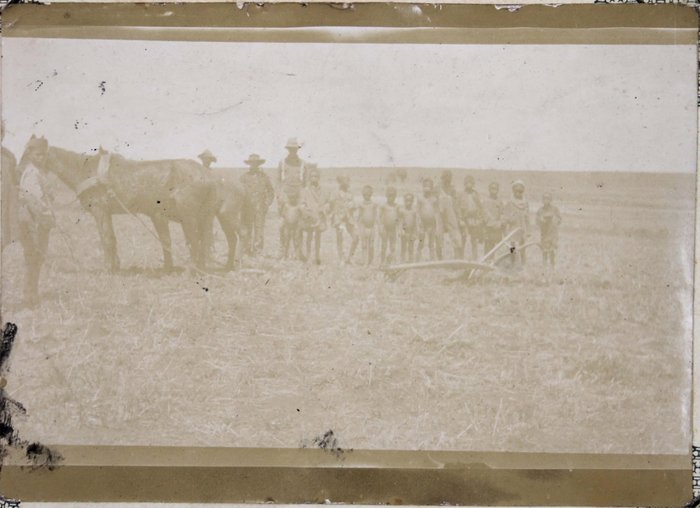
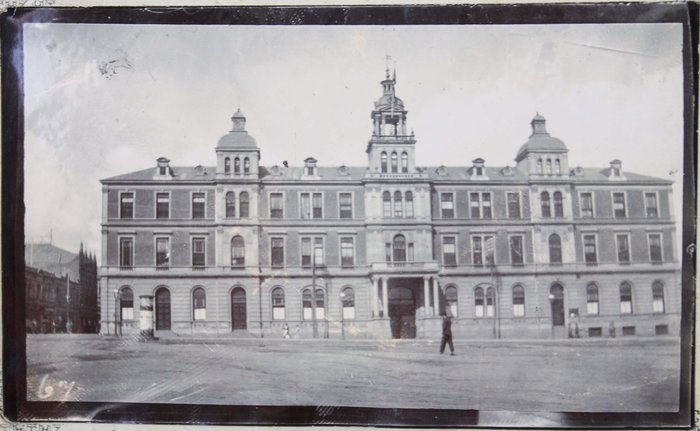
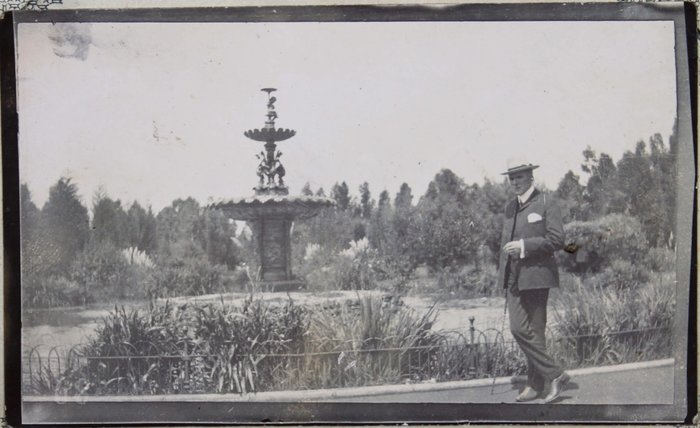
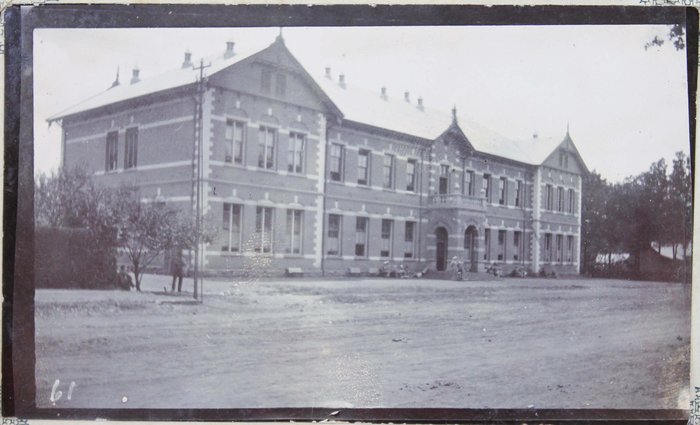
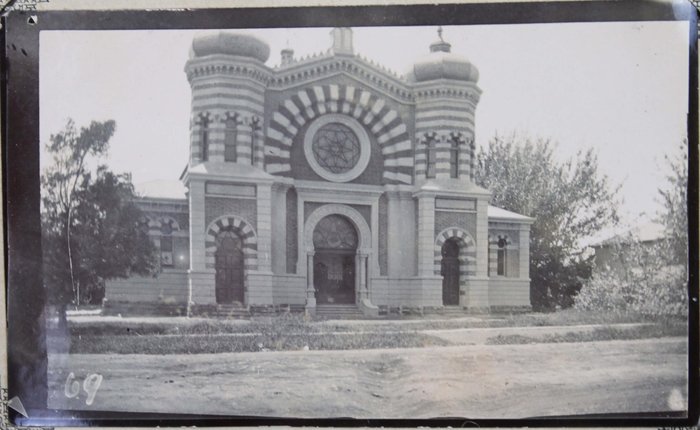


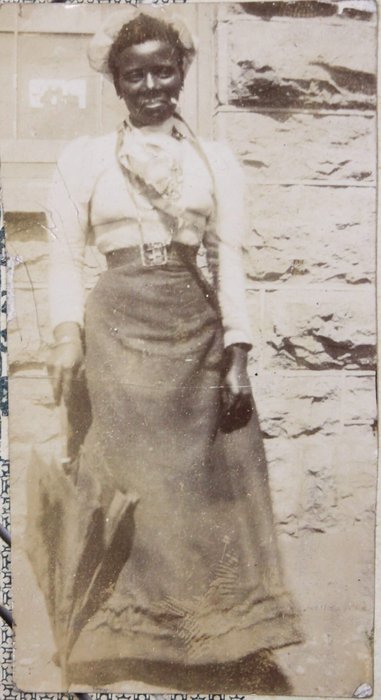
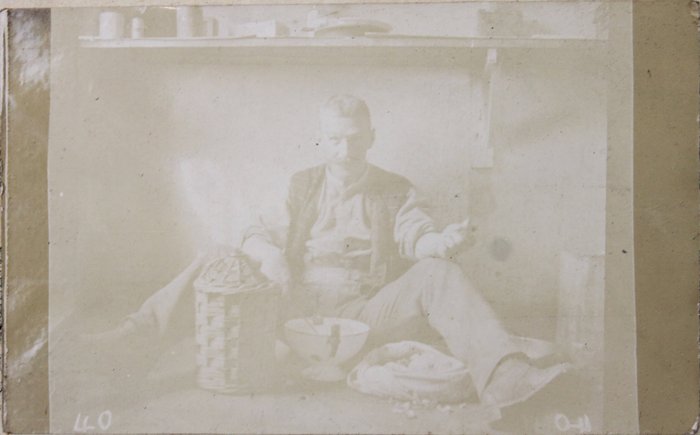
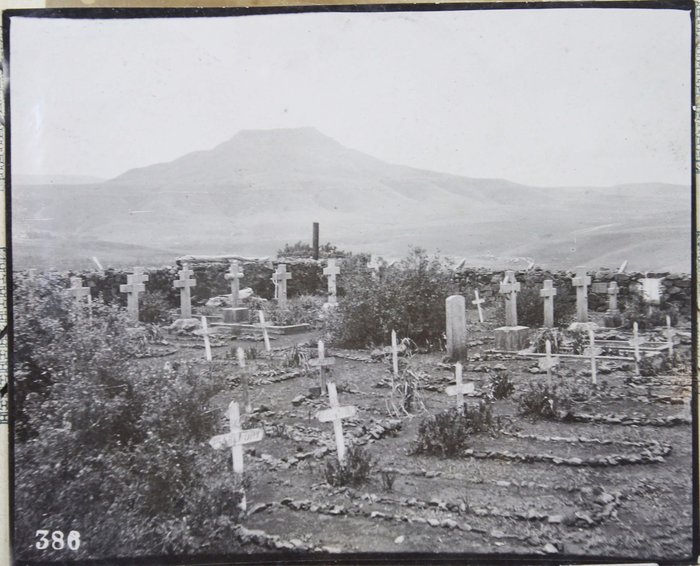
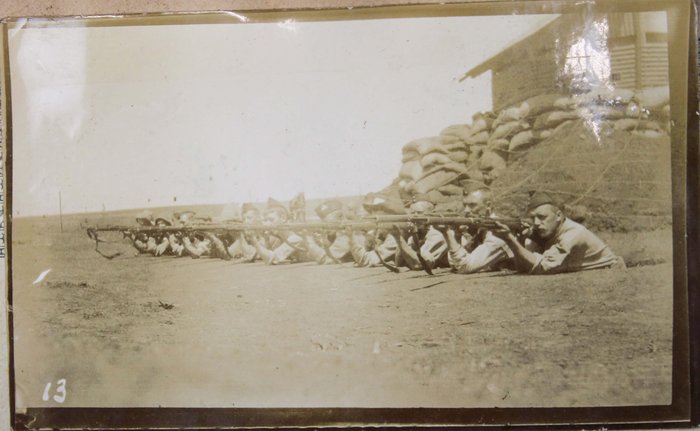
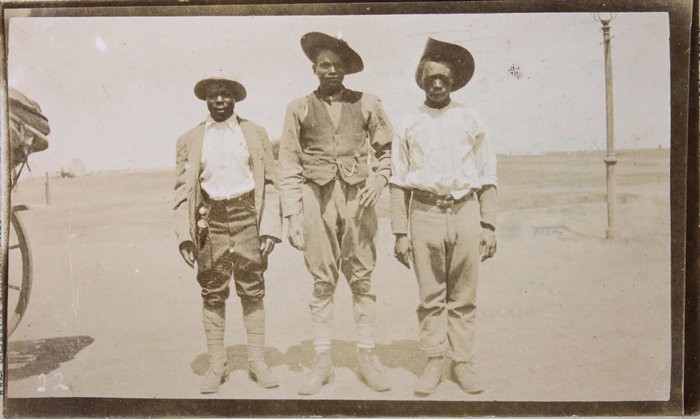
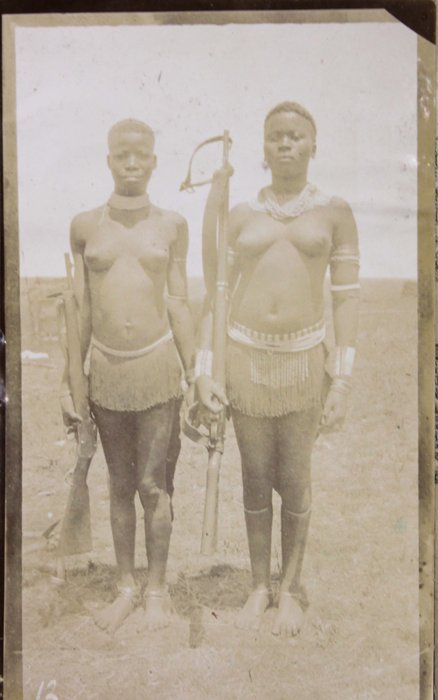
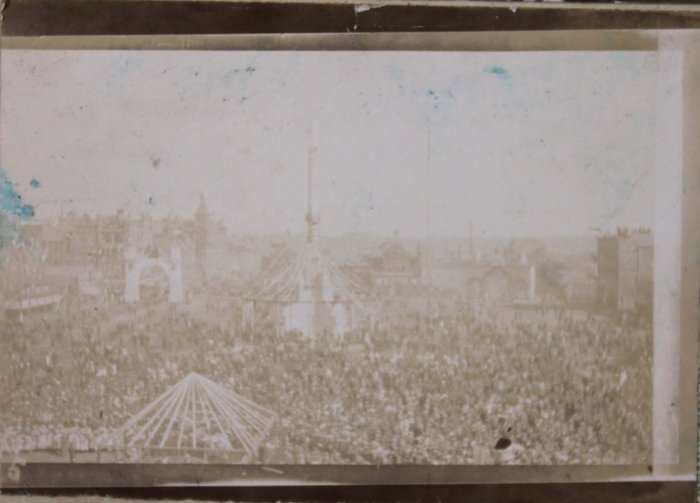



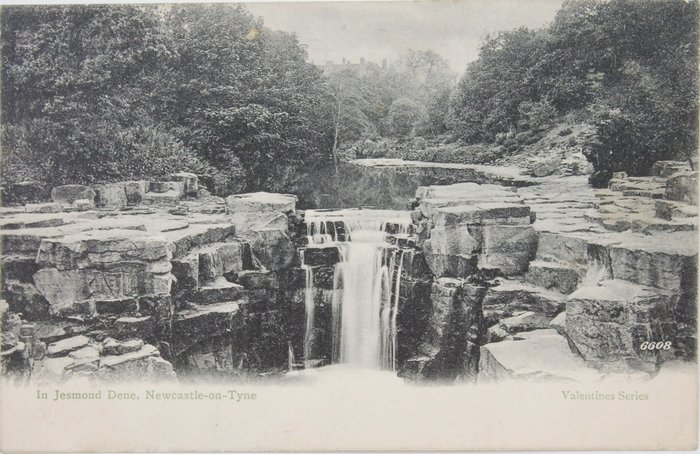
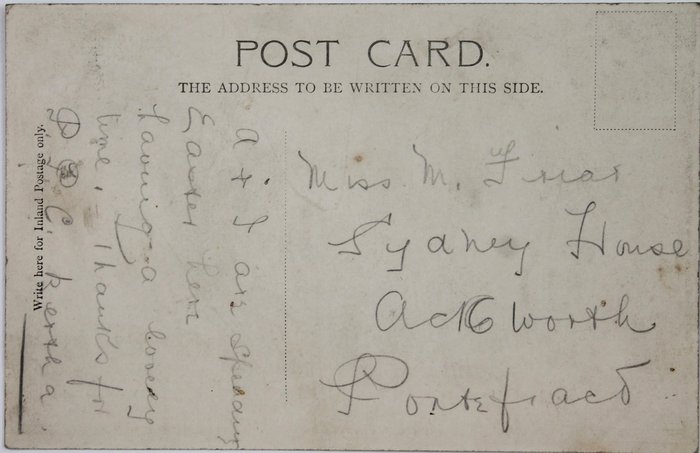
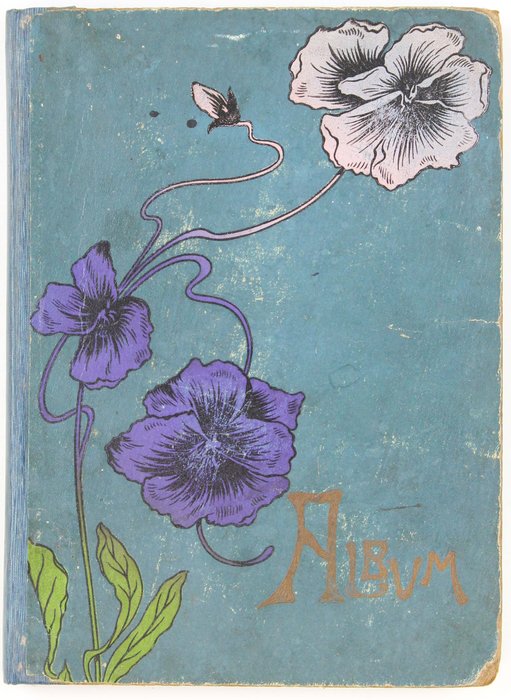
#PD6
Ca. 1899-1906
Quarto album (ca. 26,8x19,5 cm). 26 albumen leaves and one loosely inserted watermarked paper reading: “Donowan C. Wilson Photographer. Commercial Street, Hereford.” With 90 mounted original gelatin silver photographs from ca. 6,9x11,4 cm (2 ¾ x 4 ½ in) to ca. 5,2x8,2 cm (2 x3 ¼ in). Ca. 34 photos with period English captions in negatives or on the mounts. With ca. 36 mounted postcards ca. 8,9x13,5 cm (3 ½ x 5 ¼ in), most addressed on the rear, some with period captions on the front, several stamped. Period cardboard covers with blind-tooled ornaments and gilt-tooled generic title “Album” on the front board. Covers rubbed, stains on the rear board, pages with tears, one photo with a close tear, photos age-toned, but otherwise a very good album with strong, interesting photos.
Historically significant collection of original gelatin silver photographs documenting the British occupation of the Transvaal (modern-day South Africa) in the Second Boer War (1899–1902).
The compiler, “Jack Raistrick,” served in the British Telegraph Department during the conflict. According to a loosely inserted note by a previous owner, Raistrick and his wife, Annie, likely emigrated to South Africa in the 1890s.
The Second Boer War was fought between the British Empire and the two Boer republics (the South African Republic and the Orange Free State) over control in southern Africa. It was the first major conflict to make extensive use of military telegraphy, marking a new era in wartime communication. The Royal Engineers Telegraph Battalion, in which the compiler served, laid thousands of miles of telegraph and telephone lines, allowing British commanders to coordinate troop movements and intelligence across vast distances. Telegraph operators faced harsh and often dangerous conditions as they advanced with the army to set up new lines after battles.
The album features eighty-eight rare original photos of the Transvaal taken shortly after the British occupation. About ten excellent photographs show military installations and activity, including artillery barracks in Pretoria, armed National Scouts departing from Wonderfontein, and the compiler pictured with his colleagues from the Telegraph Department. Especially interesting are candid scenes of wartime realities, showing “kaffirs scrambling bead at nature store,” “Kaffir prisoner who is to be executed for shooting a girl,” “Boer prisoners,” the Princess Christian Hospital Train transporting wounded soldiers, and crowds celebrating the coronation of King Edward VII in Johannesburg’s Market Square in 1902. Another important photograph shows open railway wagons, crowded with African laborers en route to Witwatersrand gold mines under the supervision of British soldiers (control of these mines was a key objective for the British, as securing the goldfields was central to their war effort and the economic administration of the Transvaal after the occupation).
The rest of the photos mostly show individual and group portraits of local people (captioned as “kaffirs”), the compiler in various settings, and early views of landmarks in Pretoria (Lord Roberts’ Official Residence, President Kruger’s House, Jewish synagogue, general hospital, post office, reformed church), Johannesburg (train station, post office, government buildings, telephone tower), and nearby areas, including the Monument of the 58th Regiment on Majuba Hill and several burial grounds.
The album also includes approximately 35 black-and-white and color printed postcards, mostly addressed to “Mr. and Mrs. Raistrick” (most likely the compiler’s parents) in Featherstone, Pontefract, Yorkshire, dated between 1901 and 1906.
Overall, historically significant collection of original gelatin silver photographs documenting the British occupation of the Transvaal in the Second Boer War.

